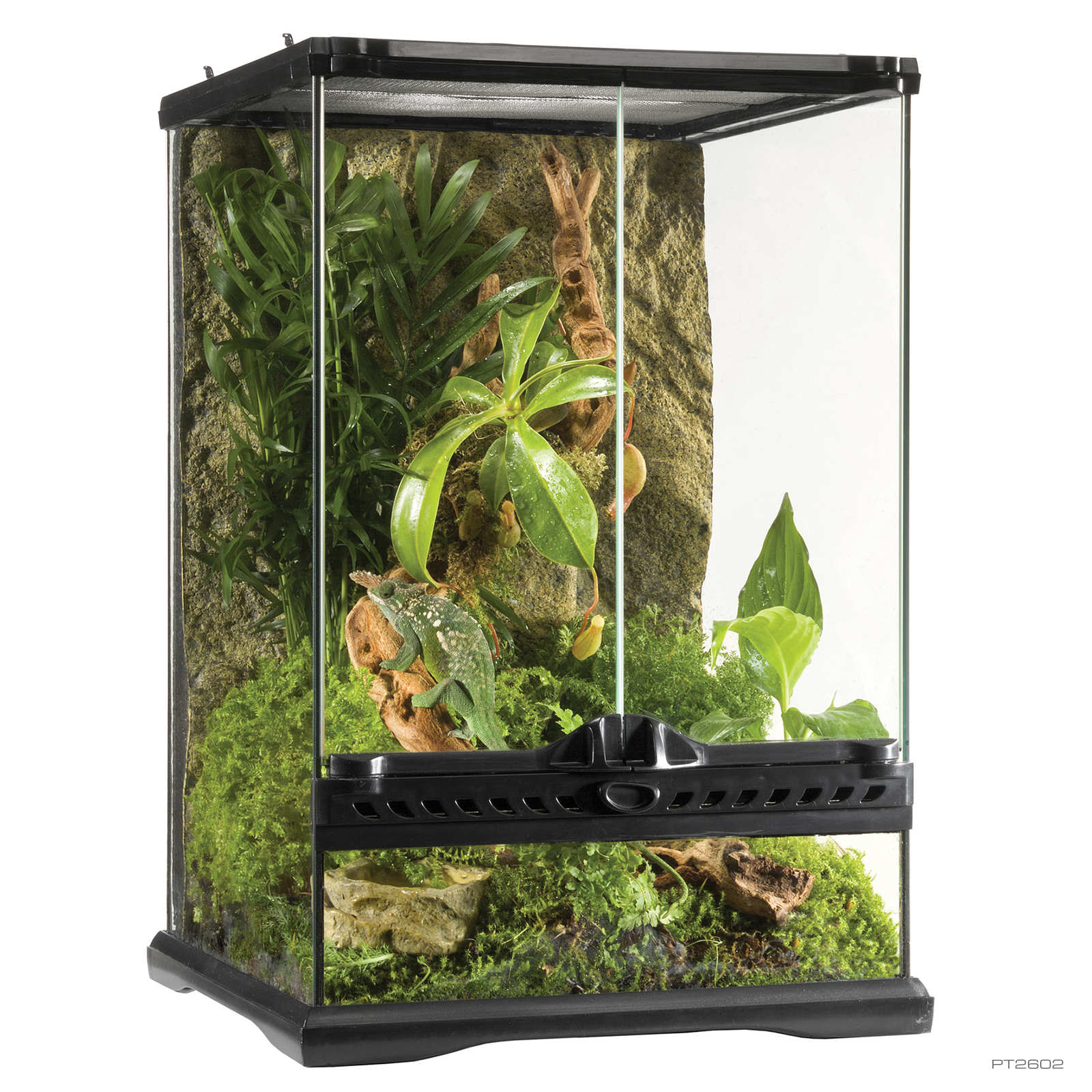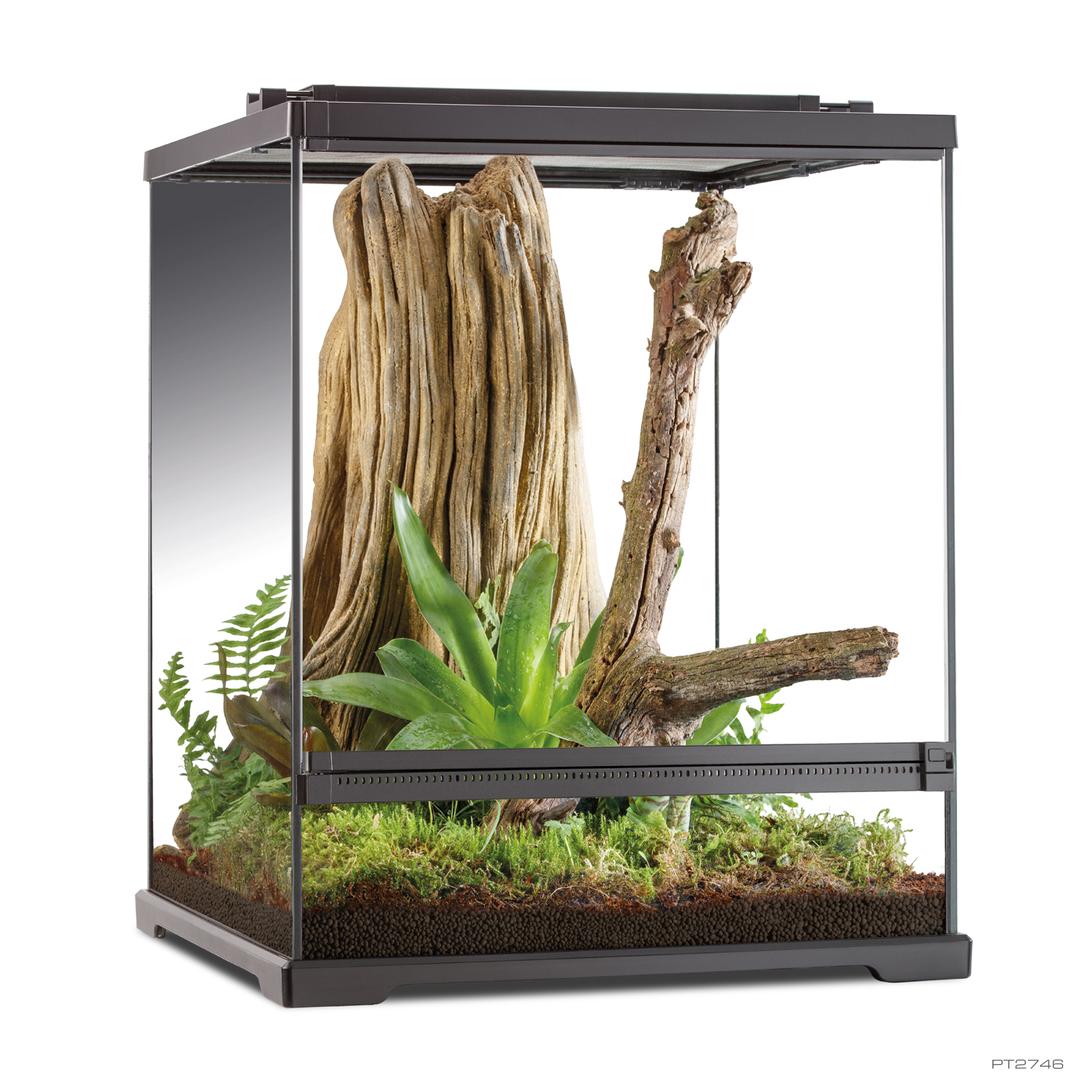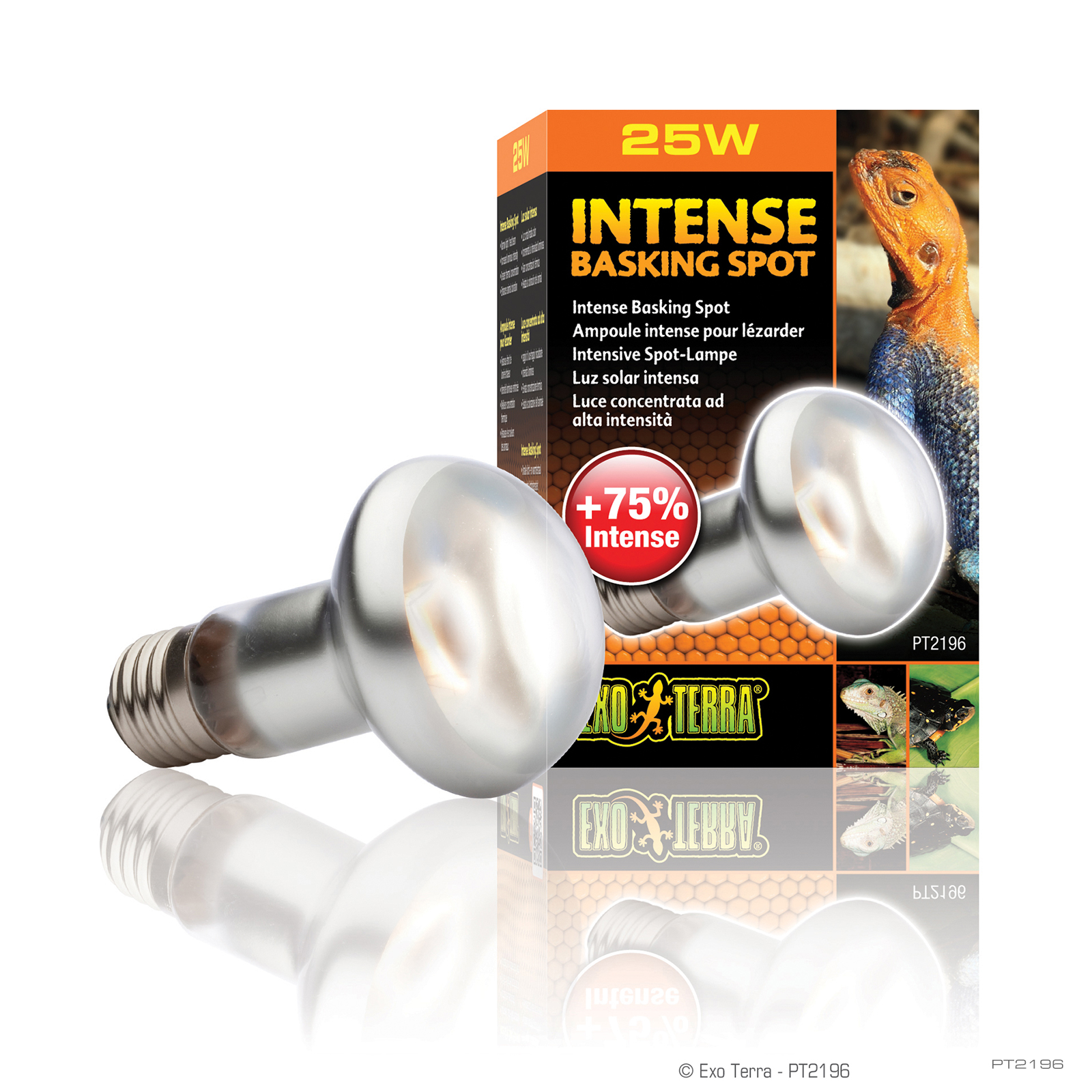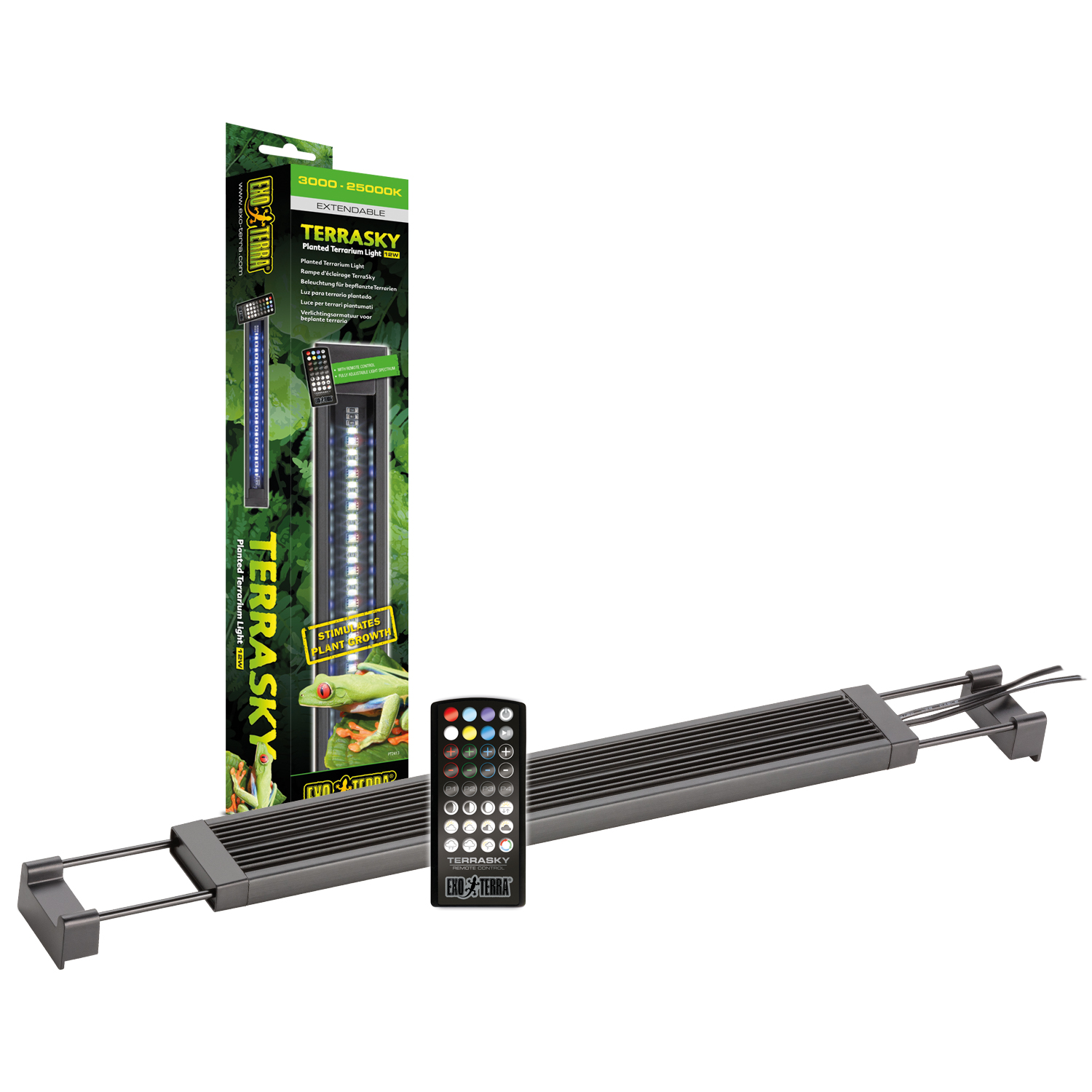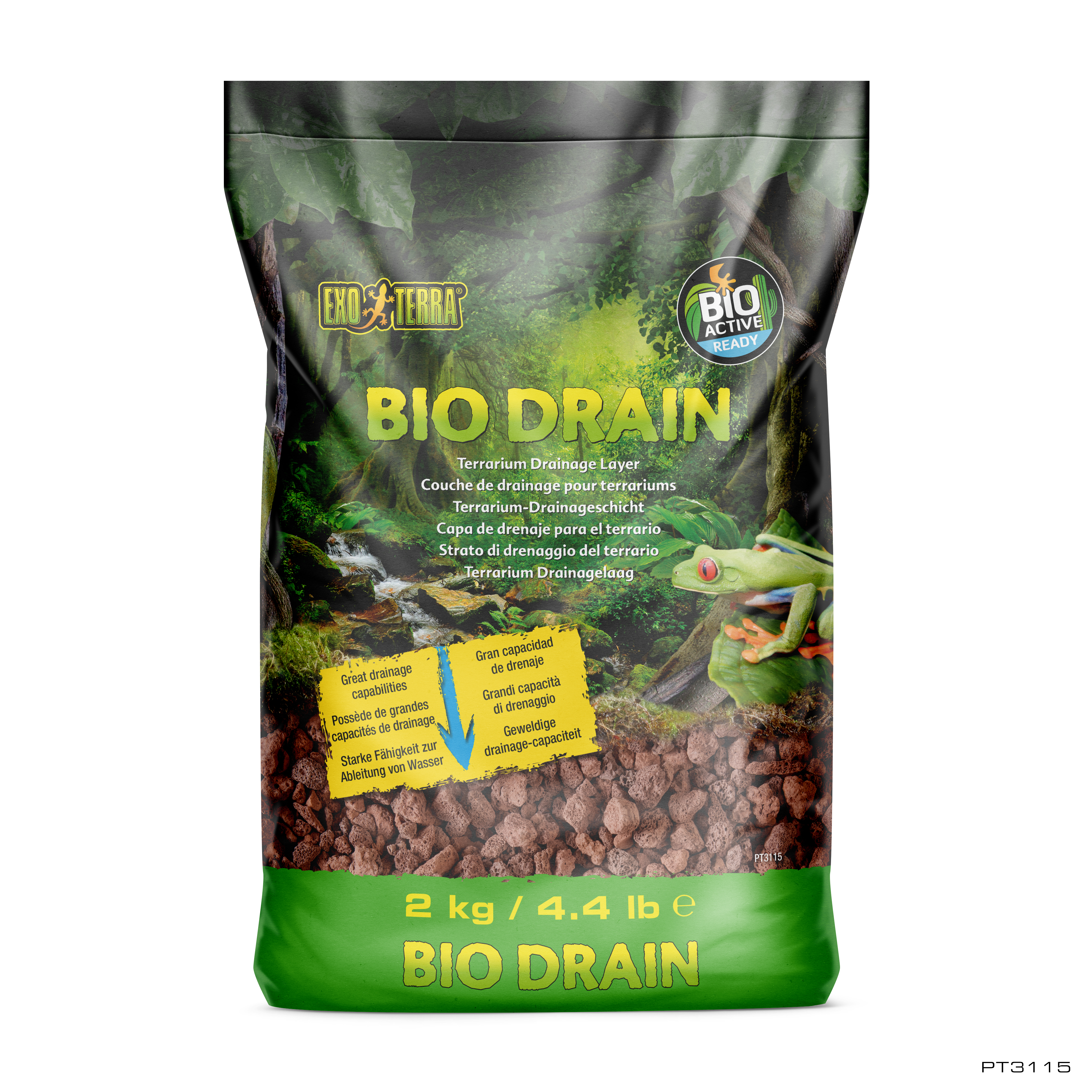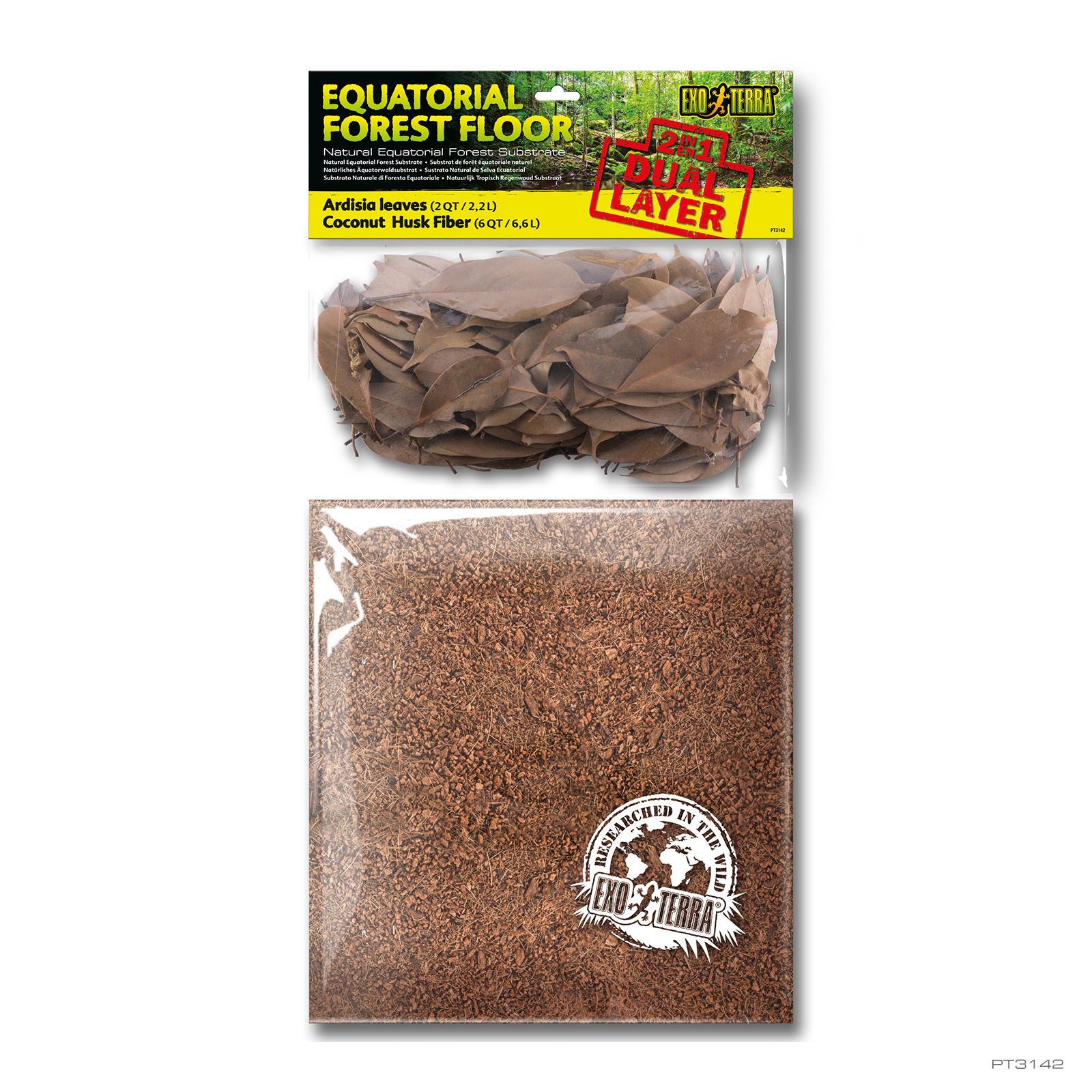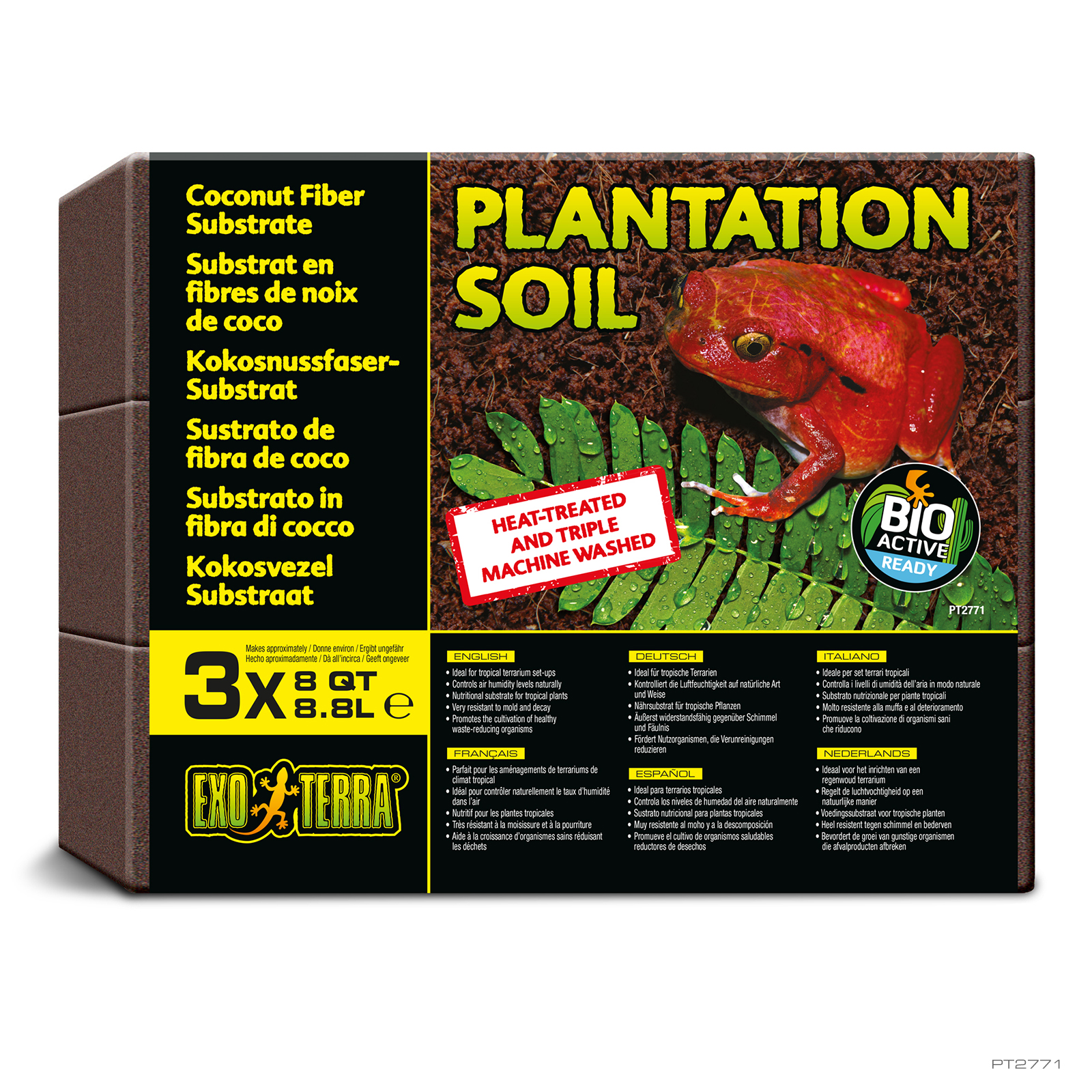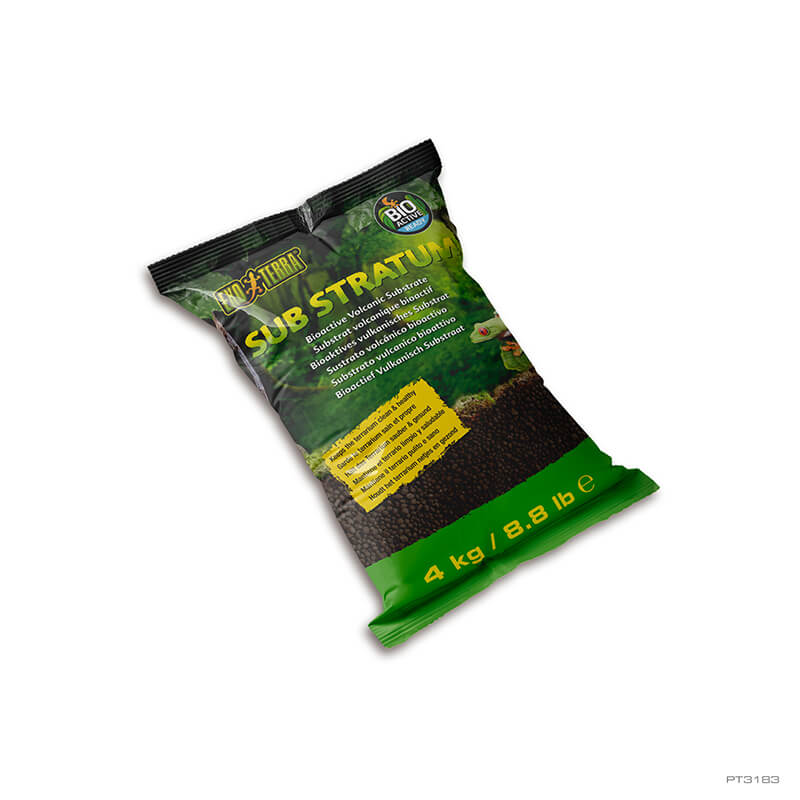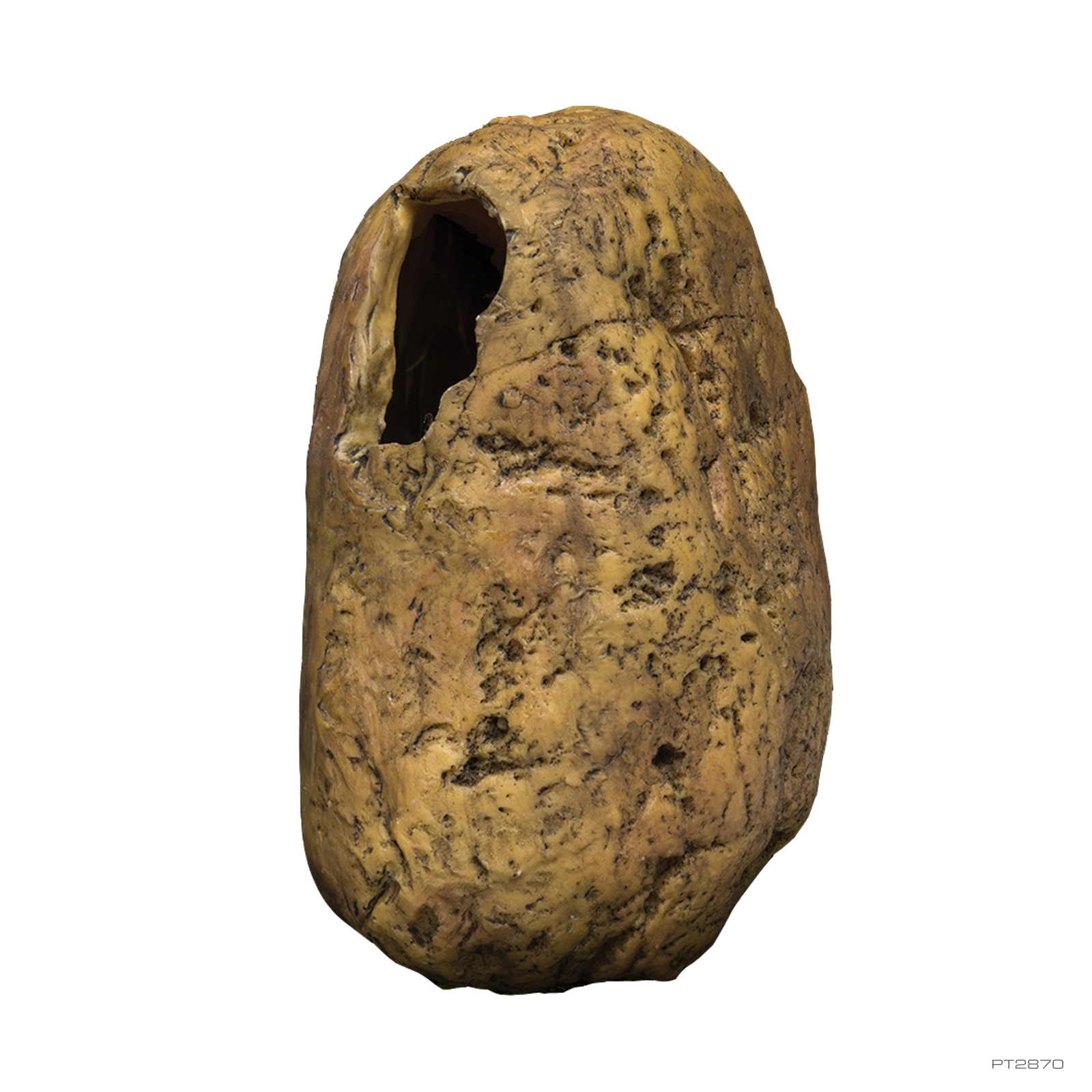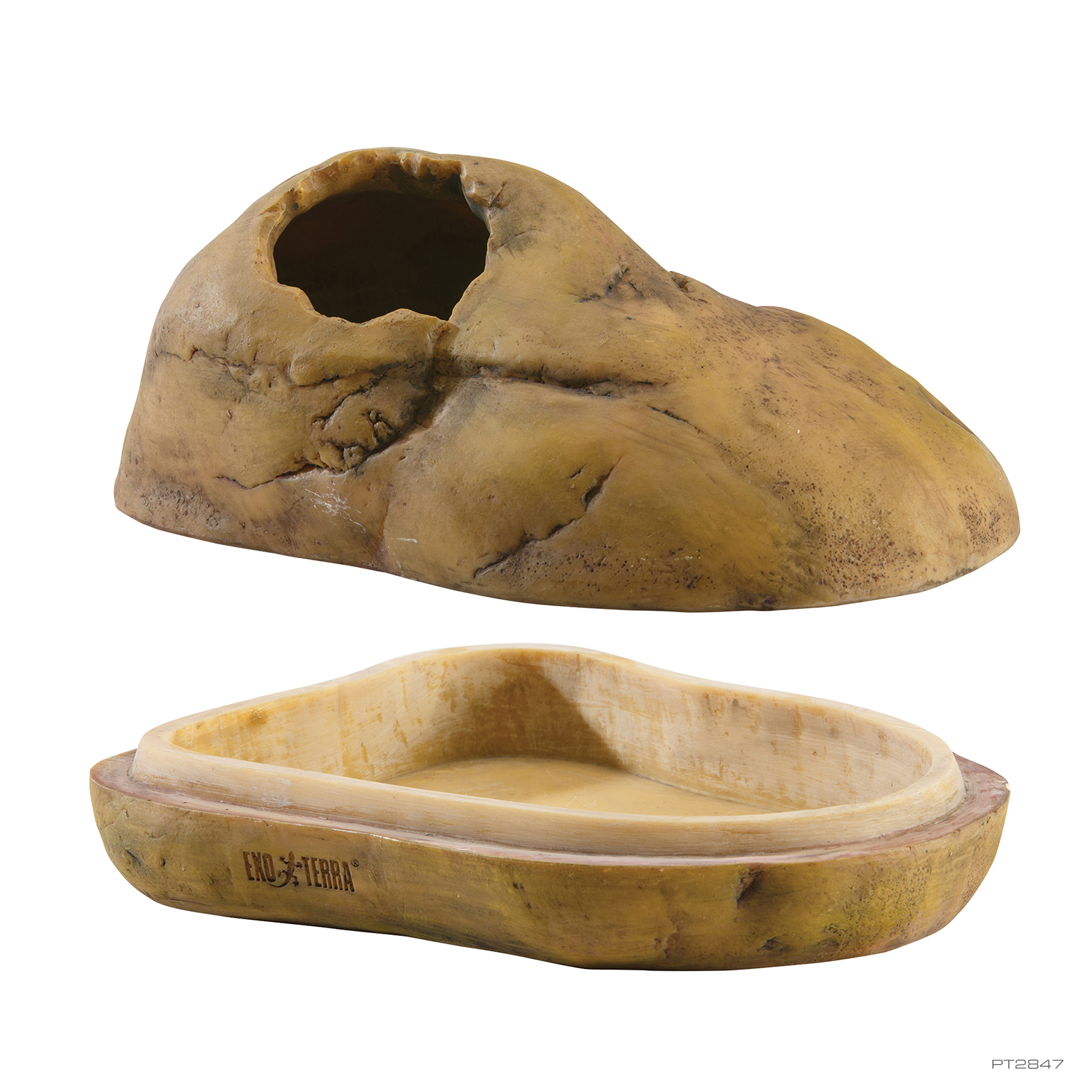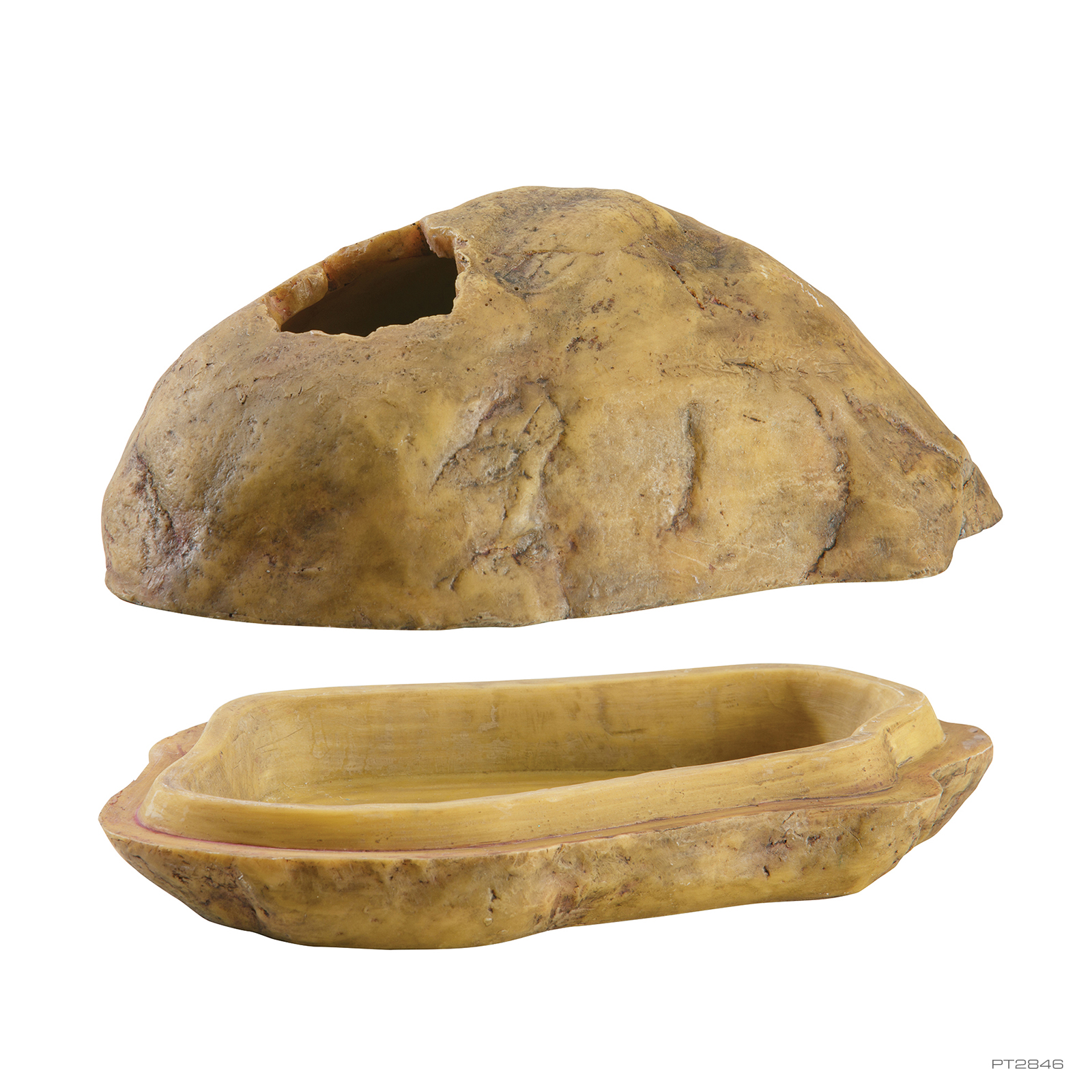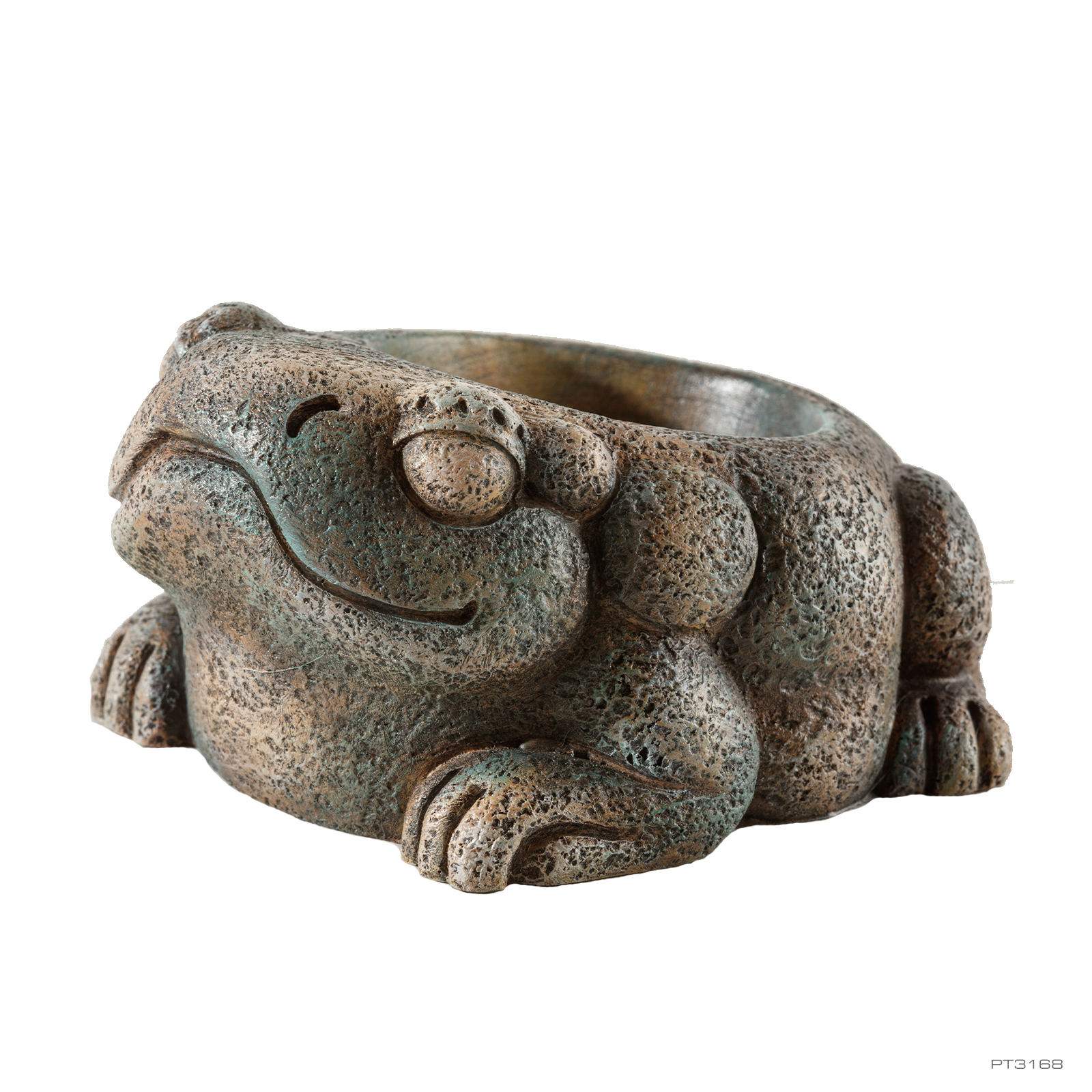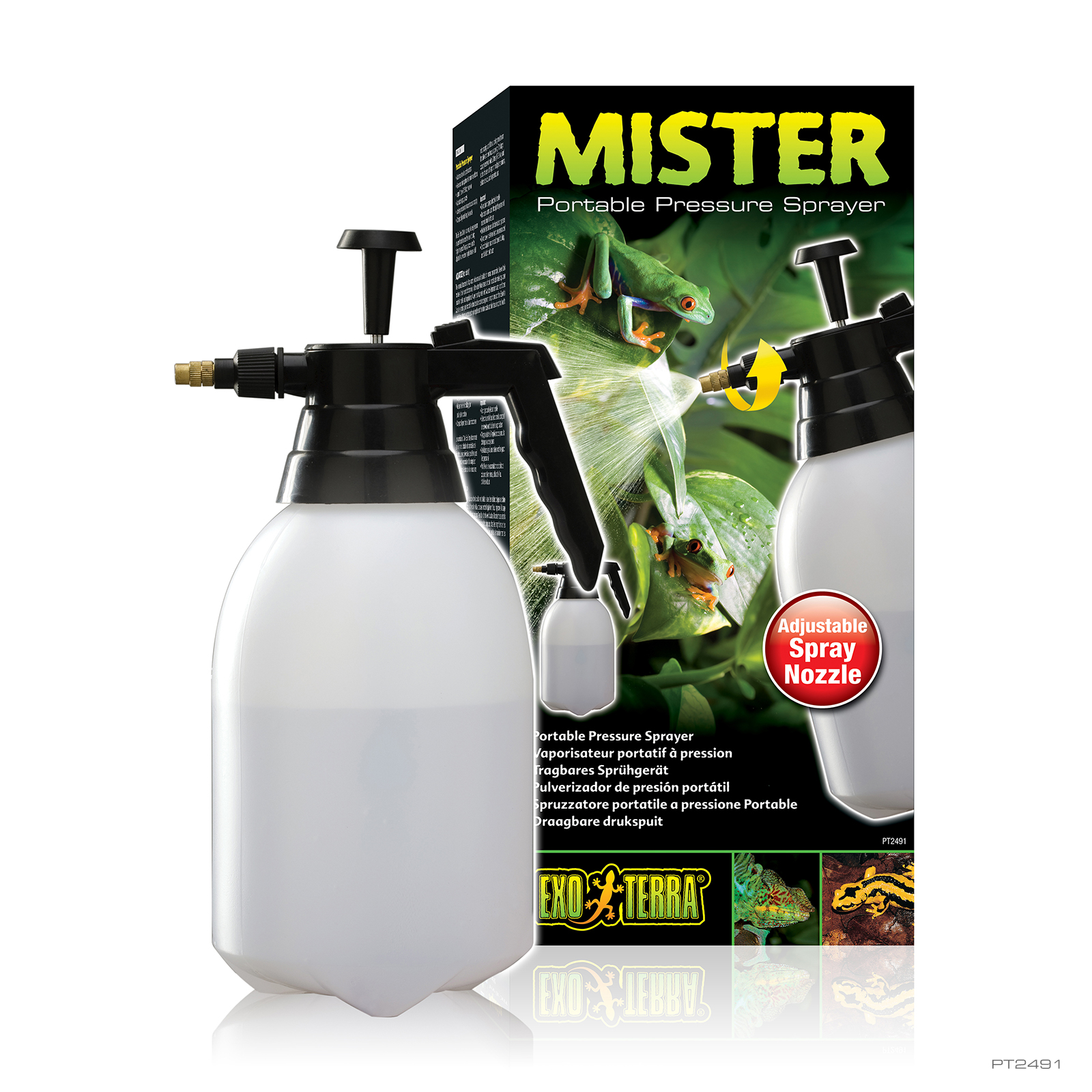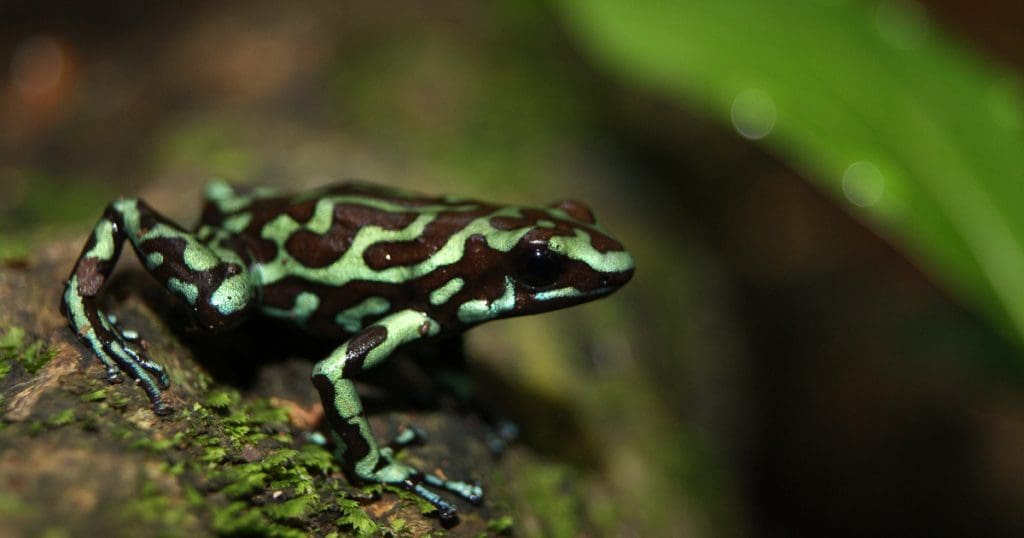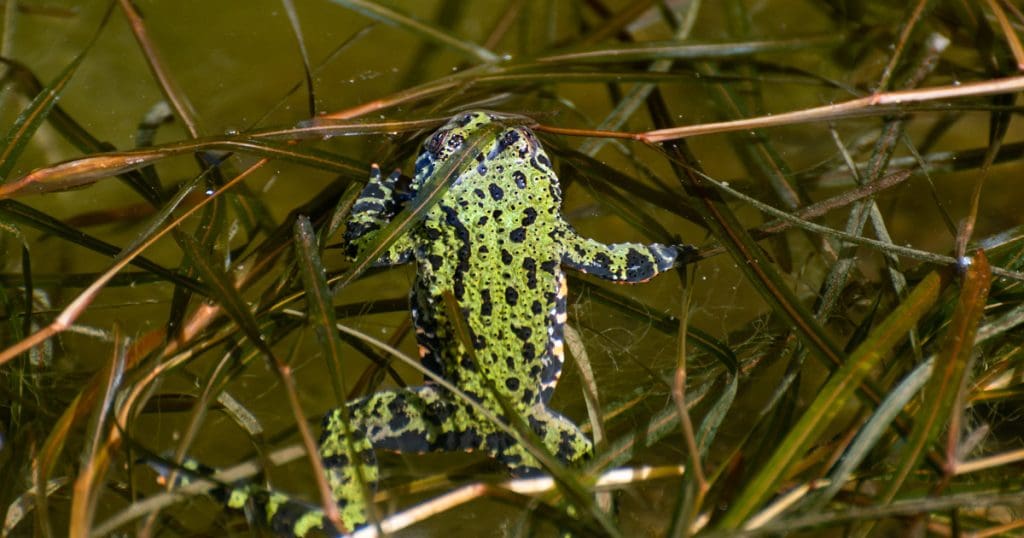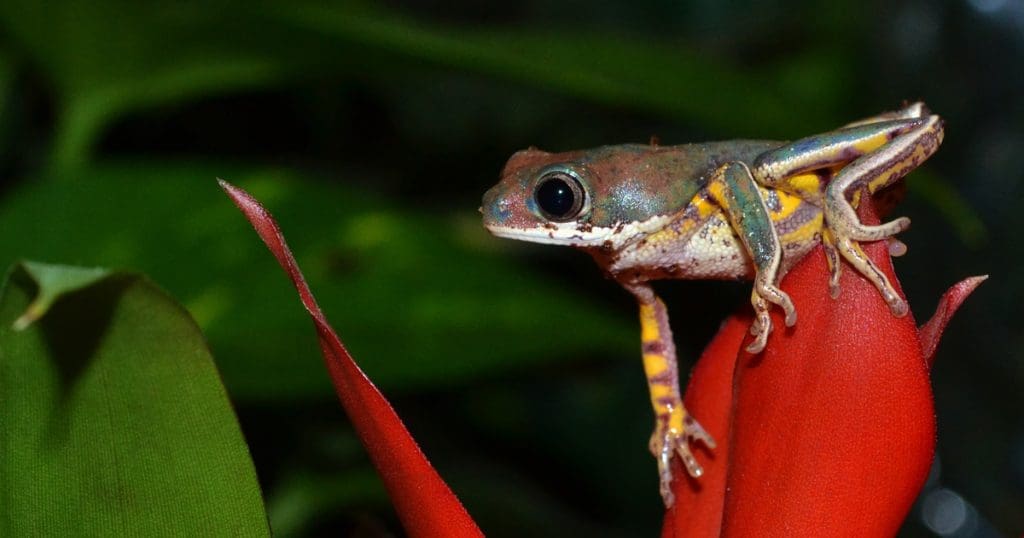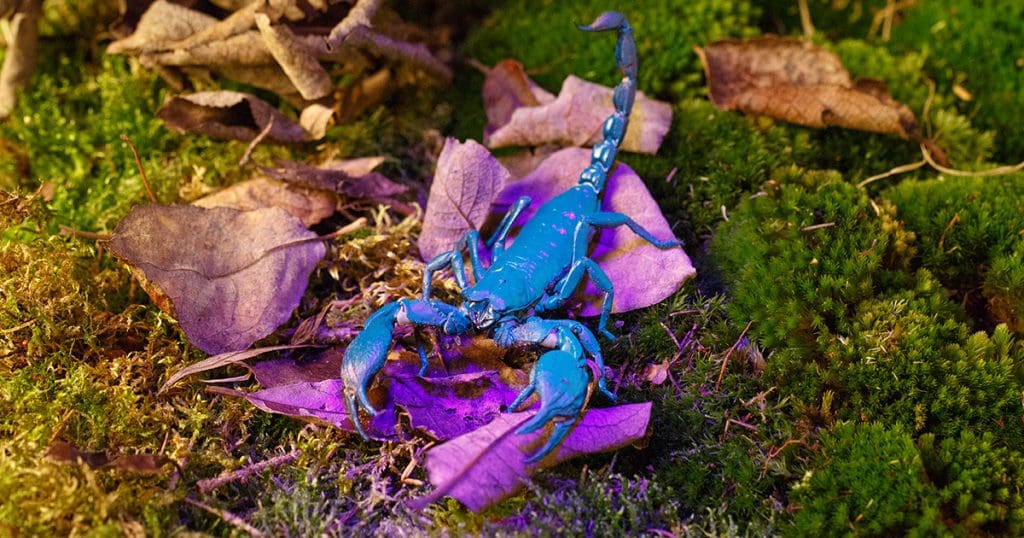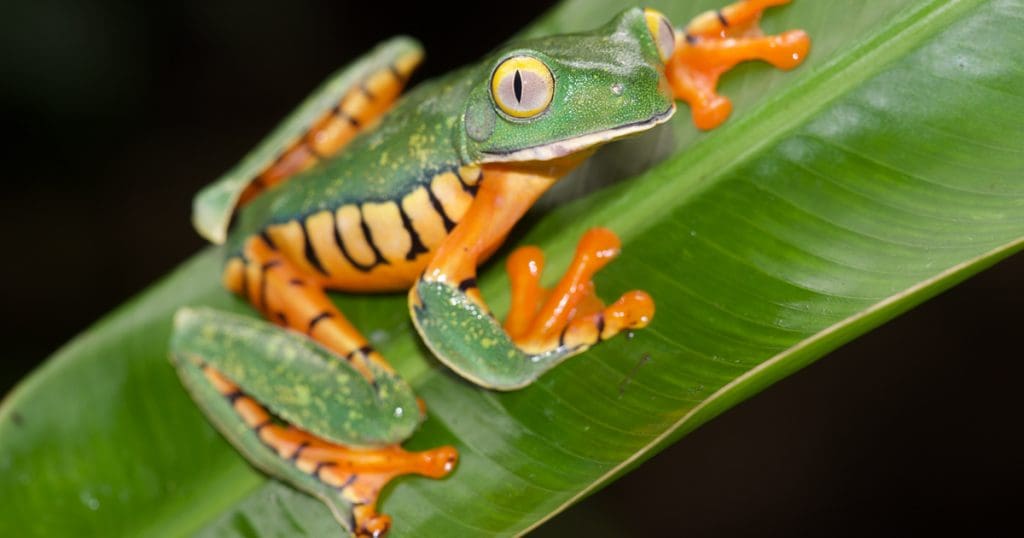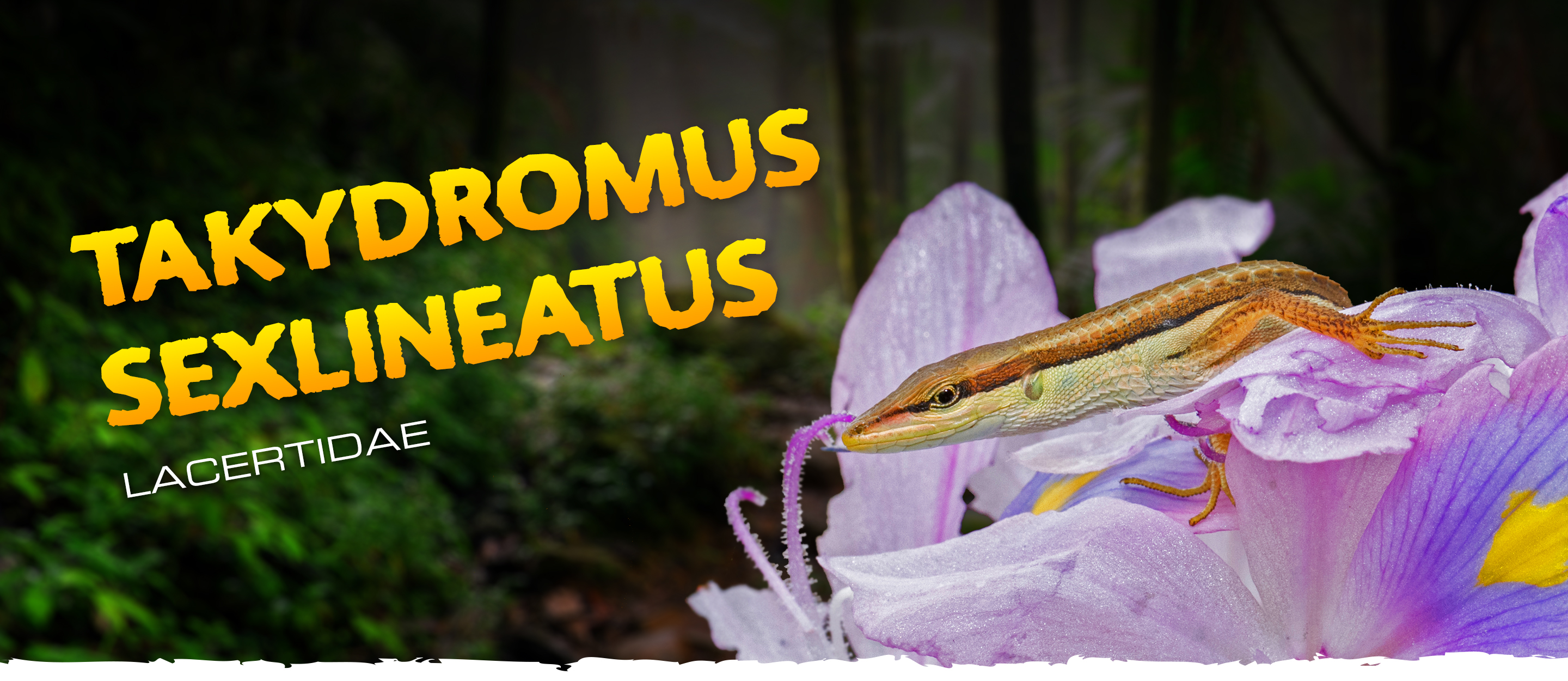
Takydromus sexlineatus


Six-striped Long-tailed lizard
Six-striped Long-tailed lizards, sometimes also referred to as Grass Lizards, are native to the Southeastern Asia region, including countries like India, China, Myanmar, Laos, Thailand, Vietnam, Cambodia, Malaysia and Indonesia. Six-striped Long-tailed Lizards are diurnal, primarily arboreal, lizards of the Genus Takydromus. With their long tail and slender body, the Long-tailed lizards are perfectly adapted to inhabit the tropical & subtropical open forests & grasslands with shrubs, bushes and tall grasses.
With their slender-built and long tails, these gentle, easy-going lizards rank among the most popular and easiest to keep beginner reptiles. It is simply fun to watch the balancing acts these agile and energetic lizards perform while cruising through the terrarium plants and decoration.
Six-striped Long-tailed Lizards are a fairly social species and are best enjoyed when kept in small groups of 1 male with 3 or more females. Although Long-tailed lizard males are not extremely territorial, housing 2 or more males in an enclosure might result in fights and injuries. The interaction between the animals in these small groups increases the viewing pleasure but also stimulates their mating behavior.
Six-striped Long-tailed Lizards have been captive bred in the USA and Europe for more than 20 years. Long-tailed Lizards are available as wild-caught specimen, but are also occasionally available as captive bred youngsters in stores or on reptile shows.


History
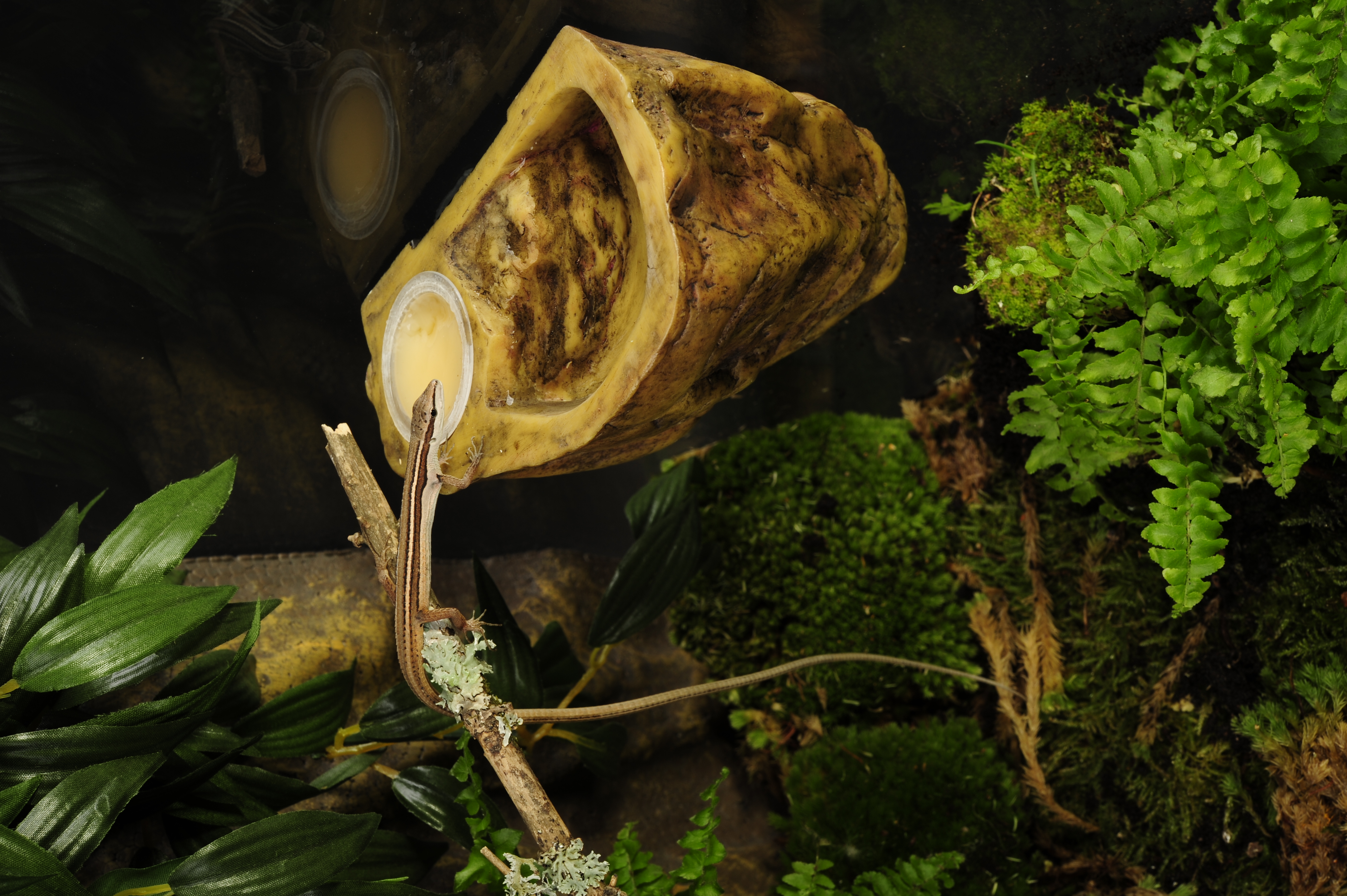

The Six-striped Long-tailed Lizard was first scientifically classified by the French zoologist Francois Marie Daudin, as Takydromus sexlineatus in his "Histoire naturelle, générale et particulière des reptiles (Natural History of Reptiles) (8 volumes) in 1802–1803". In this very extensive herpetological work, Daudin also proposed the Genus Anolis for several small species of saurians from diverse colonies of South America.
The Six-striped Long-tailed Lizard consists of 2 Subspecies:
Takydromus sexlineatus sexlineatus, DAUDIN 1802
Takydromus sexlineatus ocellatus, (GUÉRIN-MÉNEVILLE 1829)
The Genus Takydromus derives its name from a composition of two Greek words, namely "tachys" or "speed" and "dromos" or "running". Thus, Takydromus could be roughly translated as "speed runner".
The specific epithet "sexlineatus" is a composition of two Latin words, namely "sex" or "six" and "lineatus" or "striped" hence the common name six-striped long-tailed Lizard or six-striped Grass Lizard.
The subspecific epithet "ocellatus" in the subspecies Takydromus sexlineatus ocellatus refers to the various "ocellated" or "eye-like" spots seen on the males' flanks.
Characteristics
Six-striped Long-tailed Lizards belong to the family Lacertidae in the Genus Takydromus.
Six-striped Long-tailed Lizards are small to medium sized, slender lizards. Of the adult size of 8-10" or 20-25cm, the snout‐vent length only consists of 2.3 - 2.7" or 6-7cm. With a tail that takes up about 3/4 of the total length, these small lizards have the longest tail seen in any lizard (in relation to the SVL). Males and females are very similar in length, but can be distinguished by the presence of hemipenal bulges at the tail base of adult males.
The base color of both males and females can vary between light brown to dark brown on the dorsal region, and a creamy white color on the belly. Starting above the eye, a distinctive creamy white dorsolateral stripe, outlined with 2 dark stripes, extends all the way down the length of the body on each side. Males also exhibit a creamy-white ventrolateral striping on the flanks, which can vary widely in color and width depending on the individual. Females are often paler in color and the dorsolateral stripes are less pronounced.
The appearance of the subspecies "ocellatus" is almost identical to "sexlineatus" accept that the males of "ocellatus" exhibit multiple "ocellated" or "eye-like" spots on their flanks.
Apart from exhibiting a bright orange-red tail, hatchling Long-tailed lizards resemble their parents completely.
The Long-tailed Lizard's tail is slightly prehensile and these slender lizards wrap them around the grasses and branches of the bushes they live in, to balance and secure themselves. Although this chameleon-like ability is not as outspoken as seen in the actual Chamaeleonidae, it does help the Long-tailed Lizards to move quickly and safely through the grasses, shrubs and bushes.
Long-tailed Lizards reach sexual maturity at the age of 12-14 months old. We do however recommend that you pay close attention that the animals are physically strong enough to handle the arduous process of egg development and egg laying, before attempting to breed them.
Distribution
Six-striped Long-tailed Lizards are endemic to the tropical & subtropical open forests and grasslands with shrubs, bushes and tall grasses of India, China & Hong Kong, Myanmar, Laos, Thailand, Vietnam, Cambodia, Malaysia and Indonesia (Sumatra, Java, Borneo). The subspecies "ocellatus" can be found in South China, Hainan, Thailand, Laos, Cambodia, Vietnam, North Burma, and Northern Malaysia.
In the Wild
Long-tailed Lizards are diurnal reptiles that are perfectly adapted to their, mostly arboreal, lifestyle. Their long prehensile tail and slender body allows them move swiftly through the shrubs, bushes and tall grasses.
Six-striped Long-tailed Lizards primarily prefer warm and humid tropical & subtropical open forests, where they inhabit trees and shrubs and large grasses, but can also be found in rubbertree farms or sunbathing on fences and rocks in gardens.
The mating of Long-tailed Lizards usually occurs during the somewhat warmer and more humid season, from April through June. The male Long-tailed Lizard will track down a receptive female and try to impress her while walking up to her. The female's response is usually to patter her feet and than quietly walk away, whereupon the male starts chasing her. As soon as the male has caught up with her, he will bite her in the flank, just in front of the hind legs. The male will then bend his body to position his tail beneath the female's tail base, after which the mating occurs.
After the mating process has been completed, the female Long-tailed Lizard will remain and rest a while. The female will mate several times in the following days to ensure that het eggs are fertilized.
The temperatures in the habitat of Long-tailed Lizards varies between the regions but also depends on the season.
The temperatures during the rainy season, from May to October fluctuate between 80°F or 27°C up to 89°F or 32°C with humidity levels sometimes reaching +80%. Average temperatures in the somewhat drier colder months, from November through January, vary between 73-77°F or 23-25°C with a 55% low humidity. The average nighttime drop is only about 3-7°F or 2-4°C.



In the Terrarium
Six-striped Long-tailed Lizards are diurnal reptiles with a primarily arboreal lifestyle, but will also dwell on the floor to catch food insects, to deposit their eggs or to hide-out during the colder season. Because of their arboreal lifestyle, they require tall terrariums to accommodate plants and climbing structures. Taller terrariums will also allow for more stratification to enrich the environment and create a visually more appealing display.
Six-striped Long-tailed Lizards are a fairly social species and are best enjoyed when kept in small groups of 1 male with 3 or more females. Although Long-tailed lizard males are not extremely territorial, housing 2 or more males in an enclosure might result in fights and injuries. The interaction between the animals in these small groups increases the viewing pleasure but also stimulates their mating behavior.
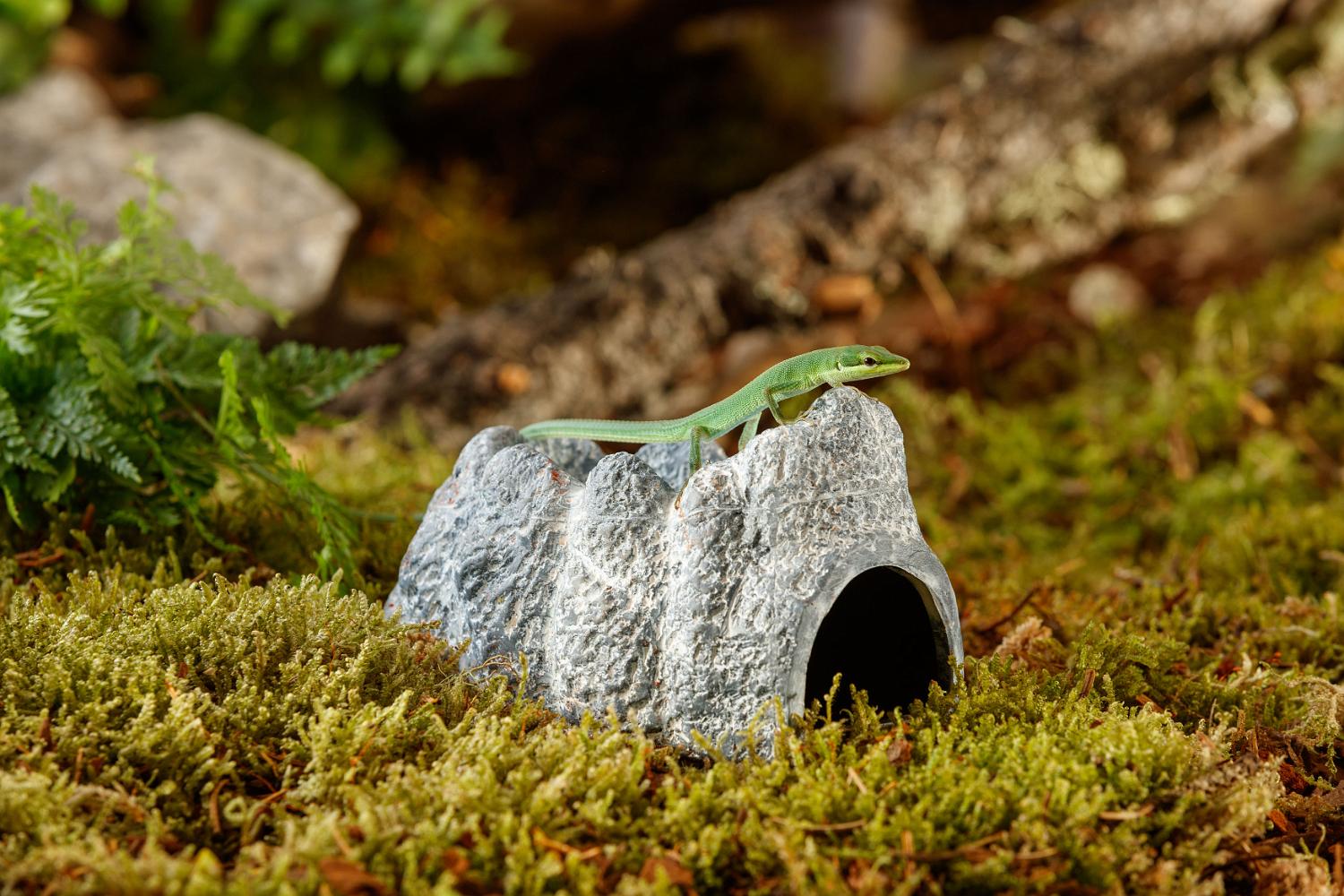

Terrarium
Long-tailed Lizards thrive best in vertically oriented, well ventilated terrariums like the Exo Terra® Natural Terrariums or the Exo Terra® Tree Frog Terrariums. Also the Exo Terra® Screen Terrariums work well, especially for outside use during sunny days, since there's no stagnant air or built-up of heat.
Exo Terra® Natural Terrariums, designed by European herpetologists, are the ideal arboreal enclosures for Long-tailed Lizards. These glass terrariums feature front opening doors, allowing easy access for maintenance and feeding and a unique double ventilation system with full screen stainless steel top. The full screen stainless steel top allows ultraviolet rays from UVB lights to penetrate deep inside the enclosure. The dual ventilation system allows sufficient airflow during the day, while it facilitates to keep the relative humidity at an optimal level during the night. In the back of the screen cover are 5 closable wire or tube inlets on both sides to facilitate the installation of powered accessories like waterfall pumps, filters, the Exo Terra's Monsoon, etc.
The Exo Terra® Natural Terrariums Mini/Tall, Small/Wide and Small/Tall provide good ventilation and adequate climbing space to raise groups of hatchling or young Long-tailed Lizards, or to maintain groups of 1 adult Long-tailed Lizard male with one or more females:
The Exo Terra® Tree Frog Terrarium even comes with a built-in drain and tap valve which allows you to easily drain out excess spray water. This drain will come in handy when simulating the rainy season to induce mating behaviour in your frogs. The single front opening door allows maximum viewing pleasure and provides easy access for maintenance and feeding. A push-button lock keeps the terrarium secure and can even be outfitted with an optional lock to prevent unwanted opening. The hinged cover can be locked and unlocked with a single button and can be fully opened. A clear glass panel in the front ensures maximum visible light penetration and a stainless-steel ventilation strip in the back guarantees optimal ventilation. The patented dual ventilation system keeps the single front glass door free of condensation, even in humid conditions. It creates a natural upward flow of air to ensure optimal and healthy conditions. Excess heat is dissipated through the top mesh and prevents heat from accumulating, creating temperature gradients in the terrarium. The screen mesh allows UV and infrared penetration when these bulbs are required. Four self-closing inlets for wire/tubing in the back facilitate the installation of powered accessories like waterfall pumps, filters, the Exo Terra's Monsoon, etc. The inside front of the lid has a Monsoon Nozzle mounting point on each side of the terrarium. The bottom part of the terrarium is waterproof once the tubing, elbow-connector and tap valve are connected to the drain. The drain allows hassle free water changes and excess water removal.
The Exo Terra® Tree Frog Terrarium and Dart Frog Terrarium provide good ventilation and adequate climbing space to raise groups of hatchling or young Long-tailed Lizards, or to maintain groups of 1 adult Long-tailed Lizard male with one or more females:
The Exo Terra® Screen Terrarium is a perfect habitat for arboreal reptiles that are sensitive to stagnant air. The non-restricted airflow provides optimal ventilation while minimizing odors and fungus growth in your reptile’s habitat. The screen design provides a broader temperature gradient, which helps your Long-tailed Lizards to regulate their body temperature more effectively and prevents overheating. The aluminum screen mesh allows ultraviolet rays from UVB lights or the sun to penetrate deep inside the enclosure. The substrate tray allows you to place a small layer of substrate to absorb spray water and increase humidity levels. The substrate tray can easily be removed from the enclosure through the swiveling bottom door. The sturdy latches add stability to the enclosure and keep your Long-tailed Lizards safe & secure.
The Exo Terra® Screen Terrariums Small/Tall and Small/X-Tall provide good ventilation and adequate climbing space to raise groups of hatchling or young Long-tailed Lizards, or to maintain groups of 1 adult Long-tailed Lizard male with one or more females:
The set-up can be a simple “sterile-type set-up" with an Exo Terra® Moss Mat, a Dripper Plant with a Water Dish, a potted live plant in combination with some Exo Terra® hanging plants, and some branches and Exo Terra® Vines as climbing space. Or you can offer your Long-tailed Lizards a more natural, “bio-active type set-up” by replacing the Exo Terra® Moss Mat with a Tropical Forest floor created by a bottom layer of Sub Stratum, a middle layer of Plantation Soil, topped with Ardisia leaves (Equatorial Forest Floor).
Never house 2 male Long-tailed Lizards together in one terrarium as they tend to be very territorial.
DISCLAIMER In regards to the pet species and number of specimens to be kept in a terrarium, always comply with the species specific Rules and Regulations in your Country of residence.
DISCLAIMER The terrarium should be placed in a room receiving only indirect light from windows. Do not place the Terrarium near a window where it can receive direct sunlight, as this could cause the terrarium to overheat and stress or kill your Long-tailed Lizards.
Lighting
Long-tailed Lizards are diurnal, meaning they’re active during daylight. Since Long-tailed Lizards are heliophilic, meaning they are attracted to sunlight, we have to provide them with a combination of sufficient visual light, UVA, UVB and Heat rays during daytime.
A 12-hour day/night cycle is an adequate photoperiod for the healthy all-year-round keeping of your Long-tailed Lizards. The more natural approach, and to induce breeding, is to provide higher temperatures with 13 hours of daylight and 11 hours of nighttime during the rainy season, and reduce the daylight cycle to 11 hours daylight and 13 hours nighttime during the dry season.
The lighting for Long-tailed Lizards consists of 2 parts. A very important role for the illumination of heliophilic lizards is reserved for the visible light in combination with UV radiation. The other part of the "lighting" is actually a combination of "light & heat" in the form of incandescent bulbs. Long-tailed Lizards do not recognise non-visible heat sources like ceramic heat emitters, heat cables, heat mats, etc.
Proper UVB Lighting is VITAL for your Long-tailed Lizards! It is very important that the upper ⅓ of the terrarium is reserved for proper basking spaces at different levels, so the Long-tailed Lizards can actively thermoregulate and UV-regulate by targeted basking. The correct UVB wavelength assures that provitamin D3 (7-Dehydrocholesterol) can be converted into pre-Vitamin D3. Once this is formed, the heat rays will then provide the correct temperature for the thermal isomerisation into actual Vitamin D3. Without the combination of light, heat and UVB, your Long-tailed Lizards cannot produce the necessary Vitamin D3 to absorb calcium from their food. A major dietary problem in captive reptiles is the low assimilation of calcium from their daily food. Calcium is vital for bone growth and maintenance, muscle function, and many of the body’s most important metabolic functions.
There are various solutions to offer your Long-tailed Lizards quality lighting. You can either go for all-in-one bulbs like the Exo Terra® Solar Glo or Solar Ray, which provide optimal levels of UVA, UVB, visual light and heat all in one bulb! These bulbs deliver a consistent spectrum, which closely approximates that of natural sunlight, contributing to the animal’s overall wellbeing. The combination of the correct UVB wavelength and heat enables the animal to produce its own vitamin D3 for proper calcium absorption and prevents metabolic diseases (e.g., MBD). The powerful light output and balanced UV rays stimulate appetite and breeding behavior, while improving the physiological health of reptiles.
Or you can choose for a combination of fluorescent UVB lighting (like the Reptile UVB150/200 linear or Reptile UVB150/200 compact) in combination with an incandescent heat bulb (like the Exo Terra® Intense Basking Spot or Halogen Basking Spot).
In order to increase the overal visible light, the Exo Terra® TerraSky Planted Terrarium Light is the ideal LED lighting solution for planted setups and bioactive terrariums. The high intensity and enhanced penetration ensure that the light reaches all layers of the terrarium, resulting in sustained lush plant growth. Orchids, Bromeliads, Tillandsias (air plants), carnivorous plants, mosses and lichen all thrive under the TerraSky Planted Terrarium Light’s strong Photosynthetic Active Radiation (PAR). The 120-degree light dispersion provides a nice even illumination and covers the complete area to avoid dark spots.
Heating
Monitoring
Long-tailed Lizards require a specific temperature range during daytime, with only a slight drop during nighttime, to thrive (see “Heating”). They also do best at a moderate relative humidity of between 60-65% during daytime and over 80% at night.
Use the Exo Terra® Digital or Analog Thermometers and Hygrometers to help you monitor the terrarium conditions and adjust the temperature and relative humidity to meet the needs of the animals. It is best to always use 2 Thermometers, one placed at the coolest end of the terrarium and the other one placed at the warmer end.
For more security and peace of mind, the Exo Terra® Thermostats or Thermostat & Hygrostat will help to prevent overheating and undercooling during hot summer days or cold winter nights. Apart from the temperature, the Exo Terra® Thermostat & Hygrostat will also help keep the humidity at the desired level. With the Exo Terra® Thermostats or Thermostat & Hygrostat you can create a well-controlled heating/humidifying system that allows you to maintain the required temperature and/or humidity conditions similar to those found in your animal's environment.
Substrates
Long-tailed Lizards are primarily arboreal and don't bother too much about the kind of substrate used in their housing, except when females need to lay their eggs or when temperature and humidity conditions become unbearable.
The set-up can be a simple “sterile-type set-up" with an Exo Terra® Moss Mat, a Dripper Plant with a Water Dish, a potted live plant in combination with some Exo Terra® hanging plants, and some branches and Exo Terra® Vines as climbing space. Or you can offer your Long-tailed Lizards a more natural, “bio-active type set-up” by replacing the Exo Terra® Moss Mat with a Tropical Forest floor created by a bottom layer of Sub Stratum, a middle layer of Plantation Soil, topped with Ardisia leaves (Equatorial Forest Floor).
1. “sterile-type set-up” The Exo Terra® Moss Mat is a convenient substrate choice especially for hatchling and young but also for adult Long-tailed Lizards. The Exo Terra Moss Mat is an extremely natural-looking terrarium substrate. Soft, hygienic and absorbent the Exo Terra Moss Mat is easy to use and can be cut to fit any terrarium size. It allows you to perfectly spot-clean the bottom part of the Long-tailed Lizard's terrarium for maximum hygiene. Simply rinse clean when soiled or replace as necessary.
2. “bio-active type set-up”
a. The substrate layer can consist of a single layer of Exo Terra® Sub Stratum, Exo Terra® Plantation Soil or a mixture of both, which will provide the benefits of both substrates.
The live bacteria in the Exo Terra® Sub Stratum will activate when the substrate comes in contact with water or waste. The organic matter such as left-over food and animal waste will decompose over time. The absorbing properties of volcanic ash will eliminate odours by trapping the decomposed materials. By mixing the Exo Terra® Plantation Soil with Exo Terra® Sub Stratum, you enrich the substrate with the required minerals like calcium, nitrogen, potassium and phosphorus. It also aids in the water retention capacity and provide adequate air supply to the roots.
b. For advanced drainage and aeration, you can use the multi-layered Bio Drain System. In the Bio Drain System, you use an inorganic bottom drainage layer, like Exo Terra® Bio Drain Substrate or Exo Terra® Sub Stratum, which you cover completely with the non-decomposable Bio Drain Mesh. This will allow proper water drainage and aeration of the substrate layers you will built up on top. The actual substrate layer that will be used for planting can consist of mixture of Exo Terra® Sub Stratum with Exo Terra® Plantation Soil. The multi-layered Bio Drain System with the Sub Stratum and Plantation Soil mix will allow proper drainage and aeration, preventing foul smells often associated with damp soils.
The Exo Terra® Sub Stratum is a natural volcanic soil with live beneficial bacteria. The porous surface and low-density structure allow for excellent drainage and aeration, but it also promotes a flourishing population of beneficial, nitrifying bacteria, creating a self-sustaining, living terrarium ecosystem. The active beneficial bacteria of the soil will decompose biological waste, keeping the terrarium clean and healthy.
The Exo Terra® Plantation Soil is a 100% natural, biodegradable terrarium substrate made from sustainable, ground coconut husk fiber grown on plantations in tropical Asia. The unique hygroscopic properties of this ecological substrate regulate the terrarium’s humidity in a natural way. The unique coir pith used for the Exo Terra® Plantation Soil consists of a mixture of short fibers and coco-peat grain sizes ranging from coarse granules to fine clumps resulting in improved soil drainage and aeration. The improved aeration of the substrate promotes the cultivation of healthy waste-reducing organisms keeping your terrarium fresh and clean.
The substrate should be kept slightly moist, but definitely not soaking wet, at all times. Make sure to offer different gradients of moisture inside the terrarium. Some parts can be kept rather moist while other parts should be kept somewhat drier. Young Long-tailed Lizards prefer a somewhat more humid environment compared to adults. Also, try to vary the moisture depending on the season, spray more frequently during the warmer parts of the year. Preferably spray before the lights are switched on, and after they have been turned off.
The Exo Terra® substrates will help maintain the substrate moisture at an optimal level. Providing a top layer of Exo Terra® Leaf Litter or Forest Moss will also facilitate the substrate's moisture retention and prevent it from drying out. The Leaf Litter or Forest Moss will facilitate the natural ecosystem where beneficial organisms will break-down waste products and thus reduce odors.
The secret to growing healthy plants begins with the soil. Naturally, healthy soil contains living microorganisms — from bacteria to fungi, protozoa and arthropods. Together they form a choreographed exchange from the recycling of nutrients to the decomposition of organic materials.
Plants
Living an arboreal life in the trees and shrubs of tropical & subtropical open forests and grasslands in Southeast Asia, Six-striped Long-tailed Lizards spend all of their day, and even the nights, on branches, in tall grasses and between the foliage of bushes and plants. This means, plants in the terrarium are not only important for decorative purposes, but they also allow you to recreate the micro habitat your Long-tailed Lizards live in.
For Long-tailed Lizards, plants have various purposes. The branches of the plants are used for climbing, while the dense foliage is used as a visual barrier, for thermoregulation, and the top leaves are used to drink dew droplets from in the morning.
Long-tailed Lizards are perfectly adapted to their all-day lifestyle of drinking, sunbathing, walking, eating, hiding, mating, sleeping, all while never leaving the branches of the shrubs and grasses they live in. In the terrarium, the branches of sturdy plants, represent the natural environment for your lizards. Next to the plant's branches, the terrarium should be decorated with additional branches that reach out above the dense foliage to serve as basking area's (see Decoration).
Long-tailed Lizards are somewhat shy animals, which perform their complex social behavior over distance and don't like to be seen, unless they choose to. For this it is very important that the middle part of the Terrarium consists of dense foliage, as this will provide a visual barrier in which the lizards can retreat whenever they feel like. This is a very important factor, as it provides the lizards with a feeling of security and thus reduces stress. Once the Long-tailed Lizards feel secure, they will show themselves a lot more, knowing that they can retreat rapidly whenever they feel at risk.
This dense foliage will also provide a perfect microclimate within the Terrarium. The temperature will be lower than in the basking area above, while the humidity will be somewhat higher. This microclimate allows the Long-tailed Lizard to thermoregulate its body temperature and regulate its exposure to UV by withdrawing itself from the basking area. While hiding from the heat and UV rays, the lizard can also replenish some moisture through their nostrils and respiratory tract.
As many arboreal reptiles, Long-tailed Lizards love to drink dew droplets that formed on the leaves in the morning, or rain drops that remained on the leaves after a short rain. These water drops are easily recognised by the lizards as a drinking source. Spraying or misting the terrarium plants in the morning and evening will provide water droplets for your lizards to drink. Exo Terra® designed a plant for this specific drinking behaviour, the Exo Terra® Dripper Plant (see Watering).
Adding a mix of decorative live and Exo Terra® artificial plants to your terrarium will provide more space for spraying droplets, provide extra cover, and increase the aesthetics of the terrarium interior design.
Many hobbyists choose to introduce live plants in pots that are buried in the substrate and concealed with decor items, like cork bark or rocks. Using live plants, such as Pothos, Hibiscus, Ficus or Schefflera, provides hiding spots and contributes to the bioactive process in the terrarium. The Exo Terra® Snake Bowl is ideal for use as a decorative planting pot. Its extra deep design makes it suitable for small to medium live terrarium plants.
DISCLAIMER Make sure the plants have no pests before introduction and rinse leaves thoroughly to remove any pesticide residues.
Exo Terra® offers a wide range of artificial plant with the same advantages as live plants; they're decorative, they provide shade, and they create hiding spots and visual barriers to let your reptiles and amphibians experience an increased feeling of safety and reduced stress. Exo Terra's artificial plants are exact copies of their natural counterparts to blend in well with live plants but are much easier to maintain. A combination of live plants and Exo Terra's artificial plants allows you to fully plant a terrarium, even in the hottest or driest parts. Exo Terra®'s Hanging Plants hold spray water longer and are easy to clean & maintain.
Hide Outs
Plants are the #1 visual barrier in a Long-tailed Lizard's Terrarium. An abundance of live plants in combination with Exo Terra® Hanging Plants will provide your lizards with plenty of hiding places.
An additional decorative hide like the Exo Terra® Canopy Cave will add even more privacy to your lizards's habitat. This elevated cave provides a multi-level humid micro-climate to your Long-tailed Lizards, which they will use for hiding, shedding and even egg-laying. They will also retreat in the Canopy Cave when temperatures fall below the desired level. Add some Exo Terra® Forest Moss or Sphagnum Moss to make sure that the moisture inside the cave is somewhat higher (70-80%) than the average humidity in the terrarium.
When housing multiple Long-tailed Lizards in one terrarium, ensure that there are multiple hiding places available, to avoid stress.
Decor
Landscaping a terrarium will encourage the activity and exploratory behaviours of your Long-tailed Lizards.
A combination of live and artificial plants with Exo Terra® Forest Branches and Exo Terra® Vines should be used to maximize 3-dimensional climbing space. The combination of Forest Branches and Vines allows you to create diagonally as well as horizontally oriented climbing spaces and basking areas. The upper ⅓ of the terrarium should consist of basking area's at various levels, that are free from foliage. This will help your Long-tailed Lizards to move between the basking area and the hiding space between the foliage to thermoregulate and regulate UV exposure.
The Exo Terra® Forest Branches resembles aged hardwood branches as seen in tropical forests.
The Exo Terra® Jungle Vines & Moss Vines can be used for decorative purposes as well as for enlargement of the dwelling area. These water-proof vines are bendable, twistable life-like vines with a natural feel and look and can be twisted together with vines of different sizes to create a 3-D habitat. The Exo Terra® Jungle Vines and Moss Vines can be combined to enhance the natural Rainforest-look of your Terrarium.
The Exo Terra® Dripper Plant should be part of the decoration as well, as this realistic plant that was designed to meet the watering needs of tree dwelling reptiles and amphibians like e.g., Chameleons, Anoles, Green Keel-Bellied Lizards, Green Grass Lizards, etc. (see Watering).
Nutrition
Long-tailed Lizards are insectivorous and should be fed with a variety of live, canned or vacuum-packed insects of appropriate size. As a general rule the maximum size of the insects should be the width of the lizard’s head. Offer as much variety of insects in your lizard's diet as possible, to make sure that your Long-tailed Lizards receive all essential nutrients. All live insects should be gut-loaded with nutritious foods, like apple slices, sweet potato, oranges, cereals, bee pollen, etc. 24-48 hours prior to being fed to your Six-striped Long-tailed Lizards.
Because commercially raised insects tend to be deficient in calcium and several vitamins, they must be supplemented by coating with a reptile vitamin and mineral supplement such as Exo Terra® Multi Vitamin blended with an equal part Calcium. Always dust your feeder insects with a 1:1 mix of Exo Terra® Multi Vitamin and Calcium + D3 powder supplement using the “shake & bake” method of coating insects.
Hatchling and very young Long-tailed Lizards will need to be fed with live insects, but as they grow older, it is rather easy to train them to accept Canned or Vacuum-Packed Insects offered with a tweezer. Offering Canned or Vacuum-Packed Insects as an addition to the live insects, allows you to widen the dietary variety of food items tremendously.
Exo Terra® Canned or Vacuum Packed insects can be fed right out of the can/pouch as these insects are well fed and vitamin-calcium coated.
Exo Terra® offers 11 varieties of Canned and Vacuum-Packed Foods which allow you to bring more variety in your Long-tailed Lizard's diet. Long-tailed Lizards will readily accept canned or vacuum-packed foods if you use tweezers to make the insects appear to be alive. Just hold the insect in front of your lizard and slowly wiggle it so it appears to be moving. Loosen the tweezers as soon as the lizard grabs the insect. The Exo Terra® Canned and Vacuum-Packed Specialty Reptile Foods are a convenient way to feed insect eating reptiles, turtles, amphibians, fish and birds. These insects (and snails) have been cooked in the can to maintain nutritional value, flavor and aroma. The retorting process also softens the exoskeleton of the insects for easier digestion and breaks the bonds between the collagen protein to make it absorbable by reptiles. Collagen is an important fiber that aids in building bone, cartilage, skin and claw structures. Canned and Vacuum-Packed insects have the same nutritional value as live insects but are easier to digest. Visit our Canned and Vacuum-Packed Foods webpage for more information.
Feed juveniles daily and adults every other day.
Water
As many arboreal reptiles, Long-tailed Lizards love to drink dew droplets that formed on the leaves in the morning, or rain drops that remained on the leaves after a short rain. These water drops are easily recognised by the lizards as a drinking source. Spraying or misting the terrarium plants manually in the morning (before the lights are switched on) and in the evening (after the lights have been switched off) will provide water droplets for your Long-tailed Lizards to drink (Exo Terra® Mister or Mini Mister).
To simplify this task, and to ensure that spraying is always performed on time, Exo Terra® has designed the Monsoon, a programmable misting system that can be set to generate a fine mist at dedicated intervals during a 24-hour cycle. For Long-tailed Lizards, the best setting is to spray twice a day, once early in the morning, before the lights are switched on, and once in the evening, approximately 1 hour after the lights have been switched off.
Exo Terra® also designed a Smart Plant for this specific drinking behaviour, the Exo Terra® Dripper Plant. The Dripper Plant in combination with an Exo Terra® Water Dish assures that your lizards always have water droplets available.
Long-tailed Lizards will also readily drink from a Water Dish, so it is extremely important that you always provide them with clean, fresh drinking water. Exo Terra® offers a wide variety of Water Dish designs to match everyone’s taste, all with the same purpose, to keep your animals well hydrated. Exo Terra® Water Dishes are easy to clean and disinfect.
Always treat tap water with Exo Terra® Aquatize to remove harmful heavy metals, chlorine and chloramines, necessary to provide safe healthy water for your captive reptiles and amphibians. To keep your Long-tailed Lizards happy and healthy, we recommend that you always add Exo Terra® Electrolyte & Vitamin D3 and Exo Terra® Liquid Calcium to the drinking water. The combination of the Electrolyte & Vitamin D3 together with Liquid Calcium will ensure that your Long-tailed Lizards stay well hydrated, keep a healthy appetite and maintain a strong bone structure.
Maintenance
Long-tailed Lizards require relatively little maintenance compared to most pets. It will only take a minimum of time every day to check the terrarium temperatures and humidity, spot-clean the terrarium as well as clean and refill their water supply devices.
Daily routine:
1. Check the overall well-being of your animals, are they agile, did they lose weight, etc.
2. Check the terrarium temperatures & humidity
3. Check if the Humidifier increased the humidity sufficiently at night, and if necessary, refill the reservoir
4. Spray the Terrarium plants to create water droplets on the leaves of the plants twice a day
5. If spraying is automated with a Monsoon, check if there's still sufficient water in the reservoir
6. Clean the Water Dish with Dripper Plant thoroughly and provide clean fresh water
7. Spot-clean the terrarium; remove feces and soiled substrate, dead insects and uneaten food to prevent harmful bacteria to build up
8. Feed canned, vacuum packed or live vitamin/mineral dusted insects daily or every other day depending on the age of your Long-tailed Lizards
Weekly routine:
1. Remove and clean hard surfaces if soiled
2. If a Moss Mat is used as substrate, remove and clean the Moss Mat thoroughly
3. If live plants are used in the terrarium, water these once a week
4. Clean the inside glass and decoration with plain water to remove any waste matter. The outside (NEVER the inside) glass can be cleaned with a paper towel and window cleaner
Breeding
In nature, Six-striped Long-tailed Lizards are seasonal breeders, and their breeding season occurs in the somewhat warmer and more humid season, roughly from April through June. In order to stimulate breeding, you will have to simulate the cooler, drier, winter season prior to inducing the summer breeding season. Reduce the light cycle from 12 to 8 hours daily and keep the temperature at 73-77°F or 23-25°C for about 5-6 weeks. Also keep the humidity at the lower end (55%) by spraying less, simulating this drier winter period. Feed your Long-tailed Lizards only sparingly during this brumation period. After this 5-6 weeks brumation period, the light cycle should be increased to 12-14 hours daily and the temperatures restored to the normal settings (75-85°F or 24-29°C). The spray intervals should be increased to simulate the rainy season, and average humidity can be kept at 70-75%.
Once the temperatures and the humidity have increased, the Long-tailed Lizards will become much more active and start feeding a bit more than average to regain strength after the brumation.
The males will soon start courting the females. The male Long-tailed Lizard will track down a receptive female and try to impress her while walking up to her. The female's response is usually to patter her feet and than quietly walk away, whereupon the male starts chasing her. As soon as the male has caught up with her, he will bite her in the flank, just in front of the hind legs. The male will then bend his body to position his tail beneath the female's tail base and insert his hemipenis into the female's cloaca.
After a successful copulation and a gestation period of about 2-4 weeks, the female will bury 2-4 eggs in a shallow hole at the base of grass stems, under moist leaves or in a hollow tree stump. With an interval of between 2-4 weeks, the female may lay up to seven clutches per breeding season.
Carefully remove the eggs from the egg-laying site and place them in an Exo Terra® Incubation Box (Suspended Incubation Method) or in a plastic container (when using the conventional substrate method). The eggs are about 0.20"x 0.39" or 5x10mm in dimension. Both the conventional system using vermiculite, as well as the suspended incubation method, are described in the Exo Terra® Incubator PRO manual. Place the incubation containers in the Precision Incubator PRO and set the temperature between 75-82°F or 24-28°C with or without a slight 5-7°F or 3-4°C nighttime drop depending on your preference. Always have the Incubator operating for at least 24 hours to monitor temperatures before placing the eggs inside the Incubator. Regular temperature checks are required. The Exo Terra® Incubation Box comes with an integrated thermometer that allows you to check the actual temperature inside the egg incubation box rather than relying on the overall temperature measurement in the Incubator.
The incubation period at these temperatures takes about 40-50 days. Throughout the incubation time, the eggs will slowly increase in size, but shortly before the eggs hatch, they slightly shrink while small water droplets appear on the egg's surface. This sweating is the actual start for the hatching process, soon the baby Long-tailed Lizards will slit the egg membrane with their egg tooth and hatch.
The newly hatched Long-tailed Lizards have a SVL between 0.6"- 0.8" or 15-20mm with a total length of 2.4" to 2.6" or 60-65mm. The hatchlings show a distinctive reddish tail, a color which will fade as the hatchlings grow older. The hatchlings can be kept in small groups for the first 2-3 months, but make sure to keep a keen eye on individuals that are growing faster than other group members and separate them from the group, as they might suppress the smaller and weaker group members.
Handling
Long-tailed Lizards are animals that are best observed, but many owners choose to handle their reptiles, just so they become used to being picked up and occasionally held.
Some individuals become accustomed to being handled by their caretakers, but some individuals will not. In order to train your lizards to being handled, try to hand-feed them insects, and gently lure them onto your hand, arm or onto a stick without grasping them. Please refrain from handling individuals that clearly refuse to being approached or handled, as this might cause stress to the individual.
Please refrain from handling hatchling Six-striped Long-tailed Lizards hatchlings and youngster, as these are too skittish.
Do not approach your Long-tailed Lizards from above, as this may be misinterpreted as a predatory attack and result in a panic reaction. Make sure to use slow and gentle movements. Do not lift your lizards by their tail or limbs. Place your hand on the branch in front of your lizard and let the lizard move freely onto your hand.
DISCLAIMER Always make sure to thoroughly wash and rinse your hands with warm water before and after handling any reptile, amphibian or invertebrate.



Conclusion
Six-striped Long-tailed Lizards are very common in their native countries, that is why they have the IUCN predicate conservation status: LC “Least Concern”. Six-striped Long-tailed Lizards are sometimes available as captive bred specimen but most specimen in the trade are wild-caught, using sustainable ranching and size-selective harvesting.
Six-striped Long-tailed Lizards are an ideal beginner’s animal, they make beautiful display animals, especially in well-planted, well illuminated terrariums, where they show-off their balancing acts while cruising through the terrarium plants and decoration.


Did You Know?
The fact that Six-striped Long-tailed Lizards are very common in their native country, is why they have the IUCN predicate conservation status: LC “Least Concern”.
There are currently 24 different species of Long-tailed Lizards known to science; T. albomaculosus, T. amurensis, T. dorsalis, T. formosanus, T. hani, T. haughtonianus, T. hsuehshanensis, T.intermedius, T. khasiensis, T. kuehnei, T. luyeanus, T. madaensis, T. sauteri, T. septentrionalis, T. sexlineatus, T. sikkimensis, T. smaragdinus, T. stejnegeri, T. sylvaticus, T. tachydromoides, T. toyamai, T. viridipunctatus, T. wolteri and T.yukaiensis.
Six-striped Long-tailed Lizards are known to use "caudal autotomy", or "sacrificing their tail" as a defense strategy against predators. The predators, mainly birds, will then focus on the wiggling tail, while the lizard escapes into its surroundings. The "lost tail" will regenerate but will remain shorter and somewhat differently colored compared to the "original tail".
With a tail length of over 300% of the snout-vent length, the Six-striped Long-tailed Lizards has the longest tail seen in any lizard (relative to the SVL).
Six-striped Long-tailed Lizards will actively thermoregulate their body temperature by moving from hot basking area’s to cooler spots. They will also UV-regulate by moving between areas with a high UV radiation to spots with a lower or no UV radiation, and vice versa.
Frequently Asked Questions
My Long-tailed Lizard is turning white! Is it sick?
No, like all reptiles, Long-tailed Lizards shed their skin regularly. When about to shed they will turn to a whitish colour. Shedding will then generally occur within 24 to 48 hours.
Is a Long-tailed Lizard the right choice for me?
Long-tailed Lizards are an ideal beginner’s reptile, they're “easy-to-care-for” and they make beautiful display animals, especially in well-planted, well illuminated terrariums, where they show-off their balancing acts while cruising through the terrarium plants and decoration. Unlike night active creatures, Long-tailed Lizards are awake and active during daytime hours which is of course a big advantage for viewing pleasure. If you are looking for a hardy, relatively “easy-to-care-for” reptile and you can refrain from excessively handling your animals, Long-tailed Lizards are perfect for you.
Can I keep 2 male Long-tailed Lizards together?
Do not house 2 or more male Long-tailed Lizard in 1 terrarium, even though they are not very territorial, it might come to fight or oppression of the weaker male.
Can I feed my Long-tailed Lizards wild caught insects?
We do not recommend feeding wild caught insects as these can harbor harmful bacteria. They may also have come in contact with gardening chemicals, making them poisonous for your lizards.
Should I feed a variety of food items to my Long-tailed Lizards or can I stick to just 1 type feeder insect?
Bring as much as possible variation in your lizard's diet to make sure that your animal receives all possible essential nutrients. With Exo Terra's Canned or Vacuum-Packed insects it's easy to offer a wide variety to make sure that your lizards receive all the nutrients they need. The Canned and Vacuum-Packed insects have the same nutritional value as live insects but are easier to digest.
Is it really necessary to provide a UVB light for my Long-tailed Lizards ?



Other species
Dendrobates auratus
The green-and-black poison dart frog, or Dendrobates auratus, is a captivating amphibian native to southeastern Nicaragua, Costa Rica, Panama, and northwestern Colombia. Recognizable for its long lifespan, the species is also notable for being relatively easy to care for, making it an appealing choice for hobbyists and researchers alike.
Its vivid mint-green base coloration punctuated with black splotches sets it apart visually. However, this species displays a fascinating trait known as color polymorphism. Individuals can exhibit varying shades, with base colors ranging from green to blue, yellow, and even white. The darker splotches, a characteristic signature of the species, vary from bronze to black.
Just like other poison dart frogs, their bright colors serve a crucial evolutionary purpose. They exhibit aposematic coloration, wherein the vibrant hues deter potential predators by signaling the frog's toxic nature, discouraging them from considering the frog as prey.
Primarily terrestrial, green-and-black poison dart frogs are bottom dwellers, spending most of their time navigating through the leaf litter blanketing the forest floor. However, they frequently venture upwards, climbing vines and trees in their tropical habitats.
These frogs are attractive display animals for beginner and advanced amphibian enthusiasts. Their stunning coloration, coupled with their relative ease of care, make them popular choices for terrarium inhabitants. They are best kept as pairs or in groups with most males, as females may exhibit aggressive behavior towards each other when vying for a specific male's attention.
Initially, these creatures may exhibit shy behavior. However, when housed in a well-planted terrarium offering plenty of hiding spots, they quickly become more active, adding a dynamic element to their display. With their intriguing behaviors, rich color variation, and their adaptability, Dendrobates auratus offer a unique glimpse into the vibrant world of amphibians.
Bombina orientalis
Fire-Bellied Toads are endemic to Northeastern China, Korea, and the Khabarovsk and Primorye regions in Russia. Despite their common name Fire-Bellied “Toad”, these cute amphibians are actually frogs. As the name already indicates, their bellies are brightly colored in orange, yellow or red. These strikingly colored bellies are actually a warning sign (called aposematic coloration) to inform predators that they are distasteful and should not be eaten.
Fire-Bellied Toads are hardy, long-lived and “easy-to-care-for”. Their semi-aquatic lifestyle, their exposure of belly colors as they float at the water surface, and their somewhat clumsy “amusing” motions make them appealing display animals for both the beginning reptile enthusiast as well as for the advanced hobbyist.
Fire-Bellied Toads are a fairly social species and are best enjoyed when kept in small groups of 4 to 8 animals. The interaction between the animals in these small groups increases the viewing pleasure but also stimulates their natural- and mating behavior.
Phyllomedusa hypochondrialis (Pithecopus hypochondrialis)
Tiger-Legged Monkey Frogs are native to Colombia, Venezuela, Suriname, Guyana & French Guyana, Brazil, Bolivia and Paraguay. They prefer tropical & subtropical dry and moist forests but can also be found in seasonally flooded grasslands. The type locality of the Tiger-Legged Monkey Frog referenced in the original description is Suriname.
The Tiger-Legged Monkey Frog's common name refers directly to the striped tiger markings on the inside of the frog's thighs. These frogs really deserve their common name as being Monkey Tree Frogs. Rather than jumping like other frogs do, they prefer to use their long, skinny legs to slowly walk in the trees in a monkey-like fashion. They're also one of the only frogs with opposable thumbs, allowing them to use their monkey-like "hands" to get a firm grip on the thin branches, while walking through the vegetation that they live on.
Tiger-Legged Monkey Frogs are stunning, long-lived and “easy-to-care-for” amphibians. Their engaging personalities, their bright green dorsal color, their orange with black tiger striped inner thighs and partially orange with irregular black stripes and blotches on the flanks, make them one of the most stunning display animals for both the beginning reptile enthusiast as well as for the advanced hobbyist.
Tiger-Legged Monkey Frogs live an arboreal lifestyle, sleeping on the back of the leaves in the trees and shrubs that they live in.
Tiger-Legged Monkey Frogs are a fairly social species and are best enjoyed when kept in small groups of 4 to 8 animals. The interaction between the animals in these small groups increases the viewing pleasure but also stimulates their mating behavior.
Tiger-Legged Monkey Frogs have been captive bred in the USA and Europe for decades. The somewhat larger cousin of the Tiger-Legged Monkey Frog (Phyllomedusa hypochondrialis), the Super Tiger Leg Monkey Tree Frog (Phyllomedusa tomopterna) is also being captive bred, but to a much lesser extent.
Pandinus imperator
The Emperor Scorpion, scientifically known as Pandinus imperator, is one of the most recognizable arachnids in the world of terrarium invertebrates. Being one of the largest scorpion species, their impressive size and striking appearance have fascinated many arachnid enthusiasts.
Emperor Scorpions are indigenous to the tropical rainforests and savannas of West Africa. Their habitat includes countries such as Ghana, Togo, Benin, Nigeria, Cameroon, and the Ivory Coast. They are usually found in leaf litter and burrows, where they seek shelter from the bright sun and heat of the African day.
While Emperor Scorpions are typically solitary in the wild, some experienced keepers have managed to house them together. However, it's crucial to note that aggression and stress can arise in group settings, so it's recommended to keep them individually.
Cruziohyla sylviae
Sylvia's Tree Frogs are native to Costa Rica, Honduras, Nicaragua and Panama. They prefer primary tropical rainforests located at low to mid elevations, up to 750m above sea level. The type locality of the Sylvia's Tree Frog is Guayacán in the province of Limón, Costa Rica.
The Sylvia's Tree Frog's common name refers to the 3-year-old granddaughter of the Herpetologist Andrew Gray, who described the species in 2018.
Sylvia's Tree Frogs are stunning, long-lived and relatively “easy-to-care-for” amphibians. Their engaging personalities, bright green dorsal color, their orange with black tiger striped flanks, and their bright orange webbed feet and inner thighs, make them one of the most stunning display animals for both the beginning reptile enthusiast as well as for the advanced hobbyist.
Sylvia's Tree Frogs live an arboreal lifestyle, sleeping on the back of the leaves in the trees and shrubs that they live in.
Sylvia's Tree Frogs are a fairly social species and are best enjoyed when kept in small groups of 4 to 8 animals. The interaction between the animals in these small groups increases the viewing pleasure but also stimulates their mating behavior.
Sylvia's Tree Frogs have been captive bred in the USA and Europe for several years now, but were mostly mistakenly named Cruziohyla calcarifer, until Andrew Gray described the species as Cruziohyla sylviae.
Pogona vitticeps
Bearded Dragons are native to Australia. Both the scientific and the common name of the Bearded Dragon refer to the spiny “beard” (or pogon in Ancient Greek) which can be puffed up and darkened in coloration whenever the Bearded Dragon gets excited, stressed or wants to impress and opponent. No need to panic; the spines on the thorny triangular-shaped head and spiny torso of these Dragons may look frightening but are actually very soft when touched.
Their relatively small size and docile nature but especially their love for attention, make these gentle dragons an attractive species for both the beginning reptile enthusiast, advanced hobbyist and even for kids. And moreover, unlike night active creatures, your Bearded Dragon is awake when you are awake.
Bearded Dragons have been captive bred in the USA and Europe for over 30 years. Since Australia already banned the export of native fauna and flora in the 1960’s, all currently available Bearded Dragons are captive bred over generations.
Bearded Dragon youngsters are now readily available in their natural color and pattern, but also in a multitude of color morphs. The list of designer morphs available is extensive and still growing. Where it started with twisting and tweaking the color and pattern, the latest morphs even have a different scalation. There's a lot of cool morphs available with appealing names like Sandfire Red, Sandfire Yellow, Sandfire Pastel, Tangerine, Hypo Melanistic, Witblits, Paradox, Citrus Tiger, Lemon Fire and many more. But, as stated before, not only the colors can be isolated and enhanced by selective breeding, also some specific morphological characteristics, like size or scales can be engineered: German Giants (larger than the average Bearded Dragon), Leatherback (smooth back, no spikes), Silkback (smooth skin), etc.
Stay up on all things exo terra.
"*" indicates required fields


